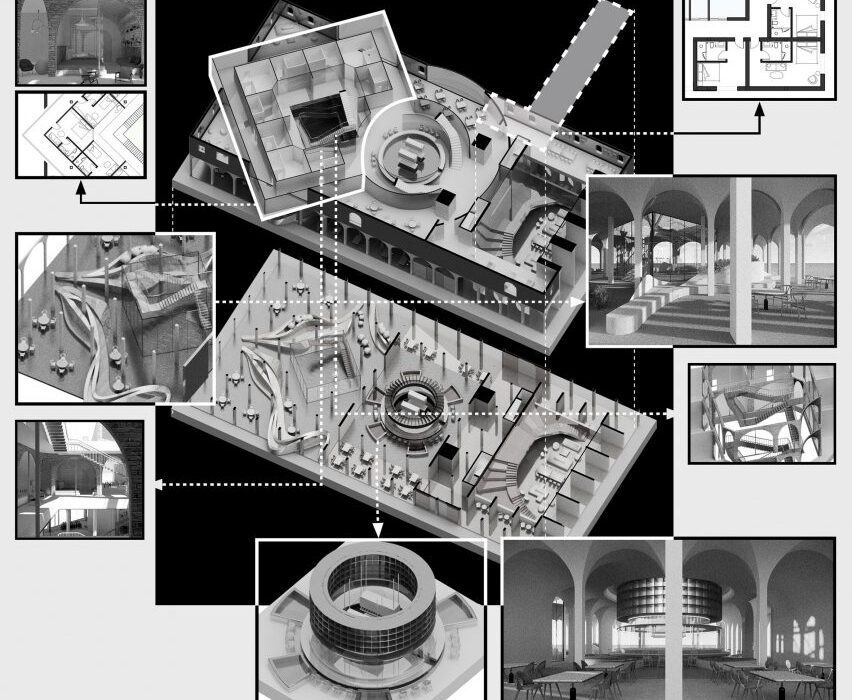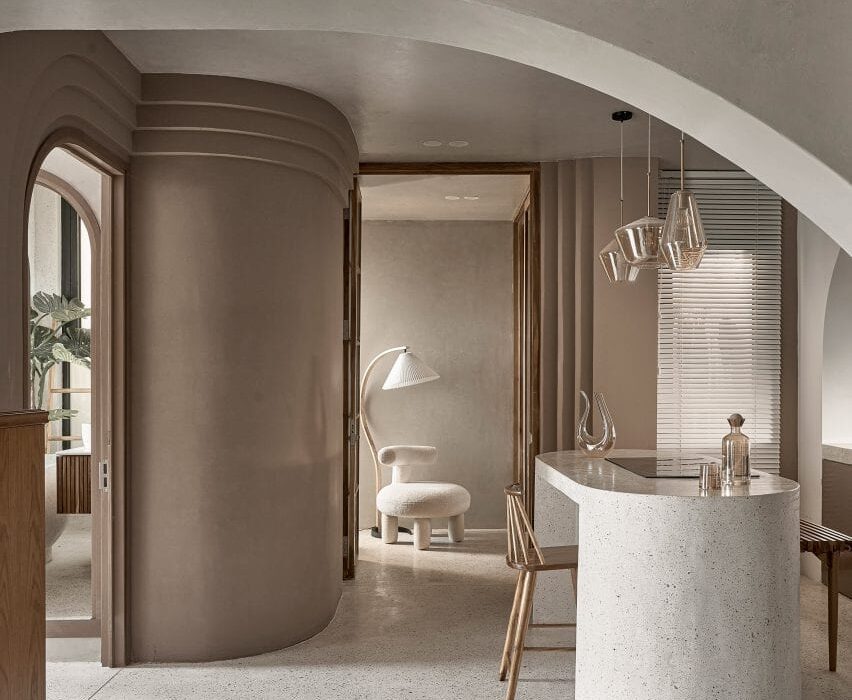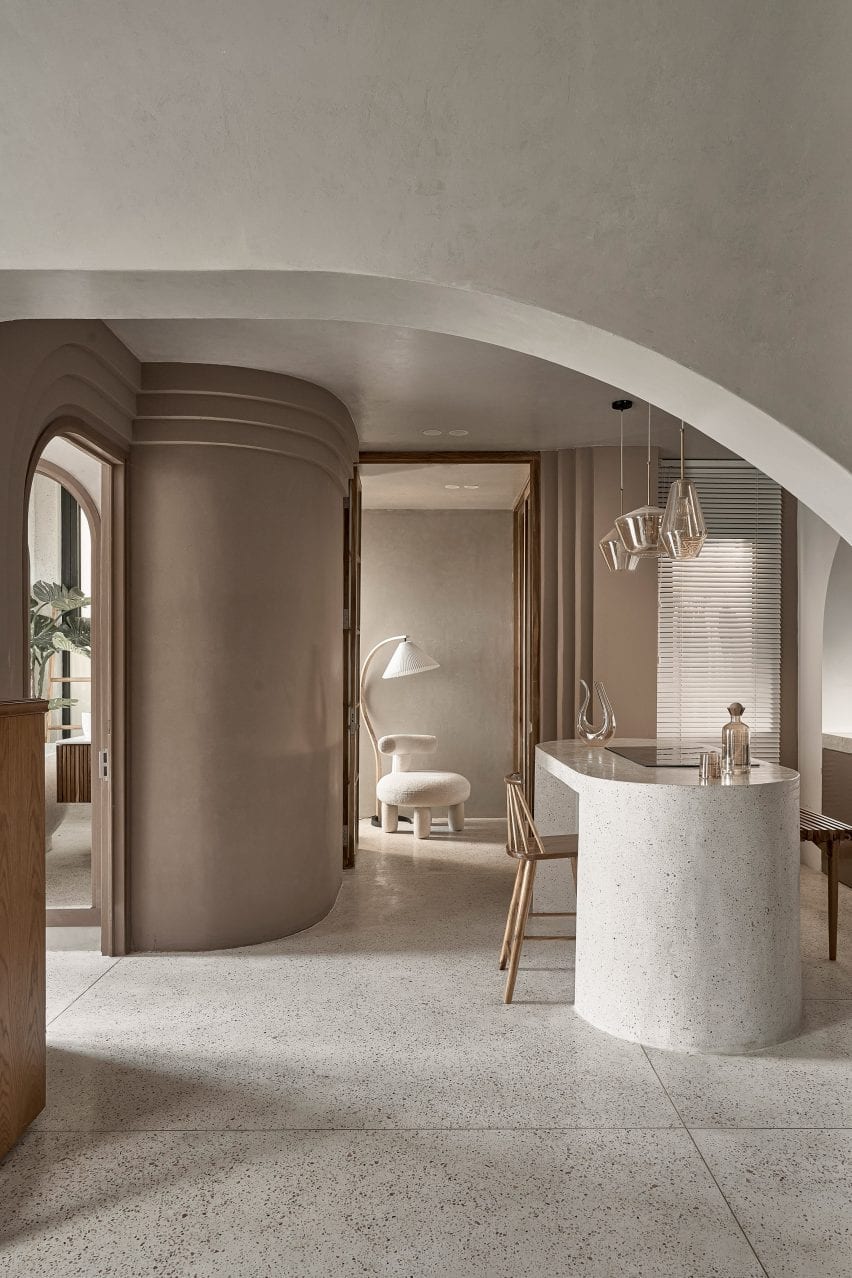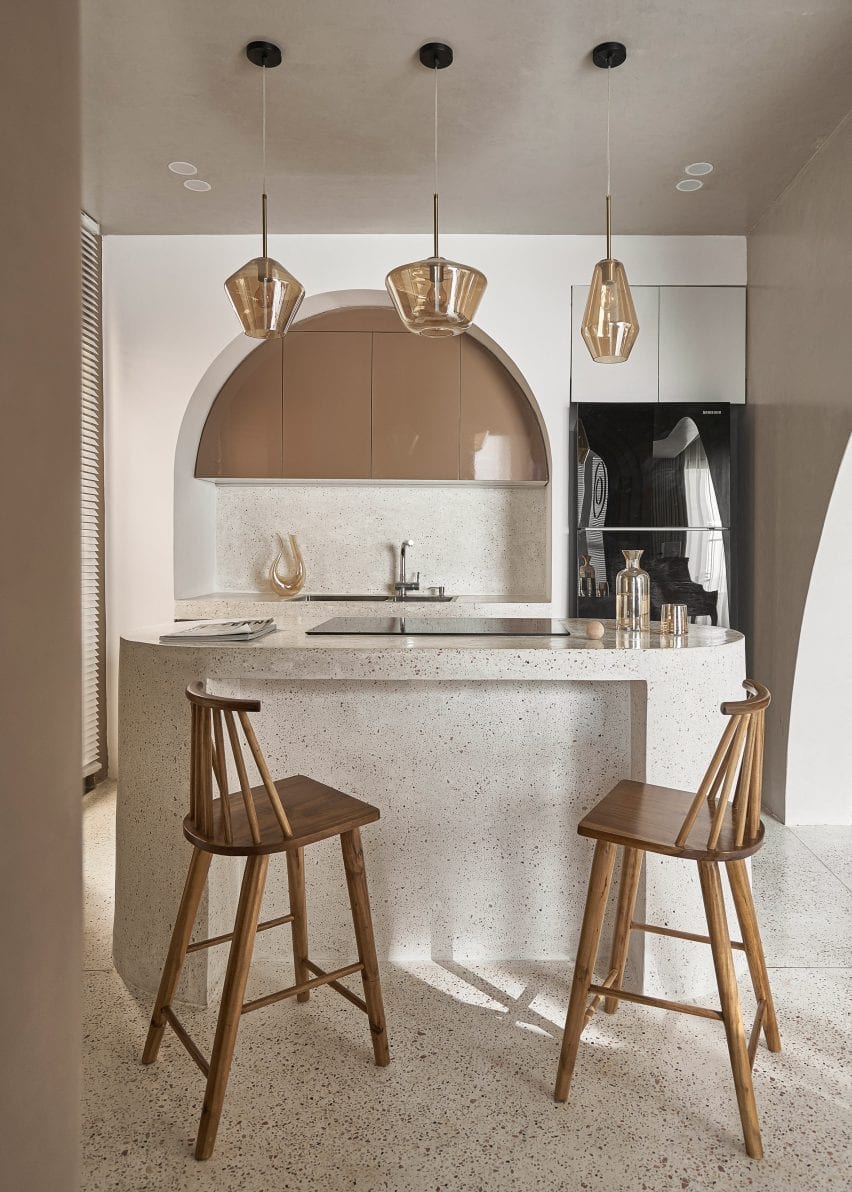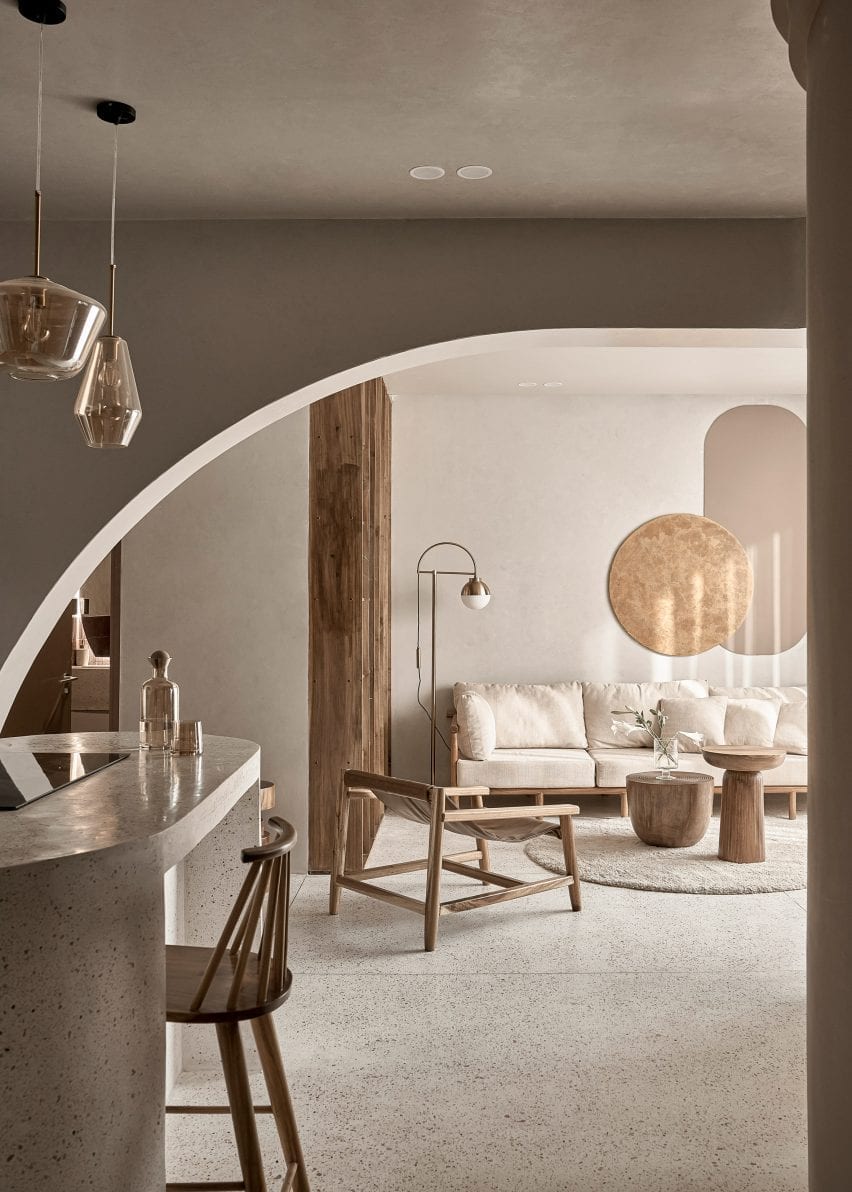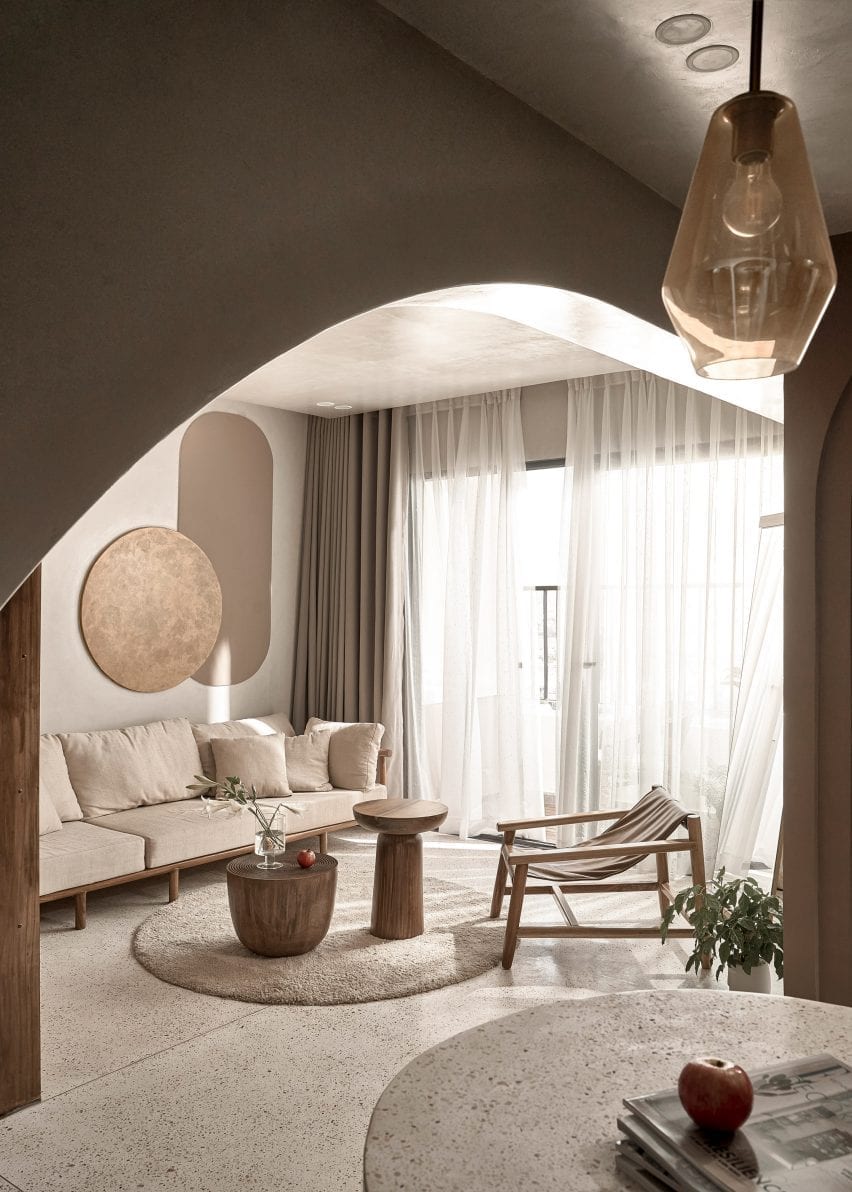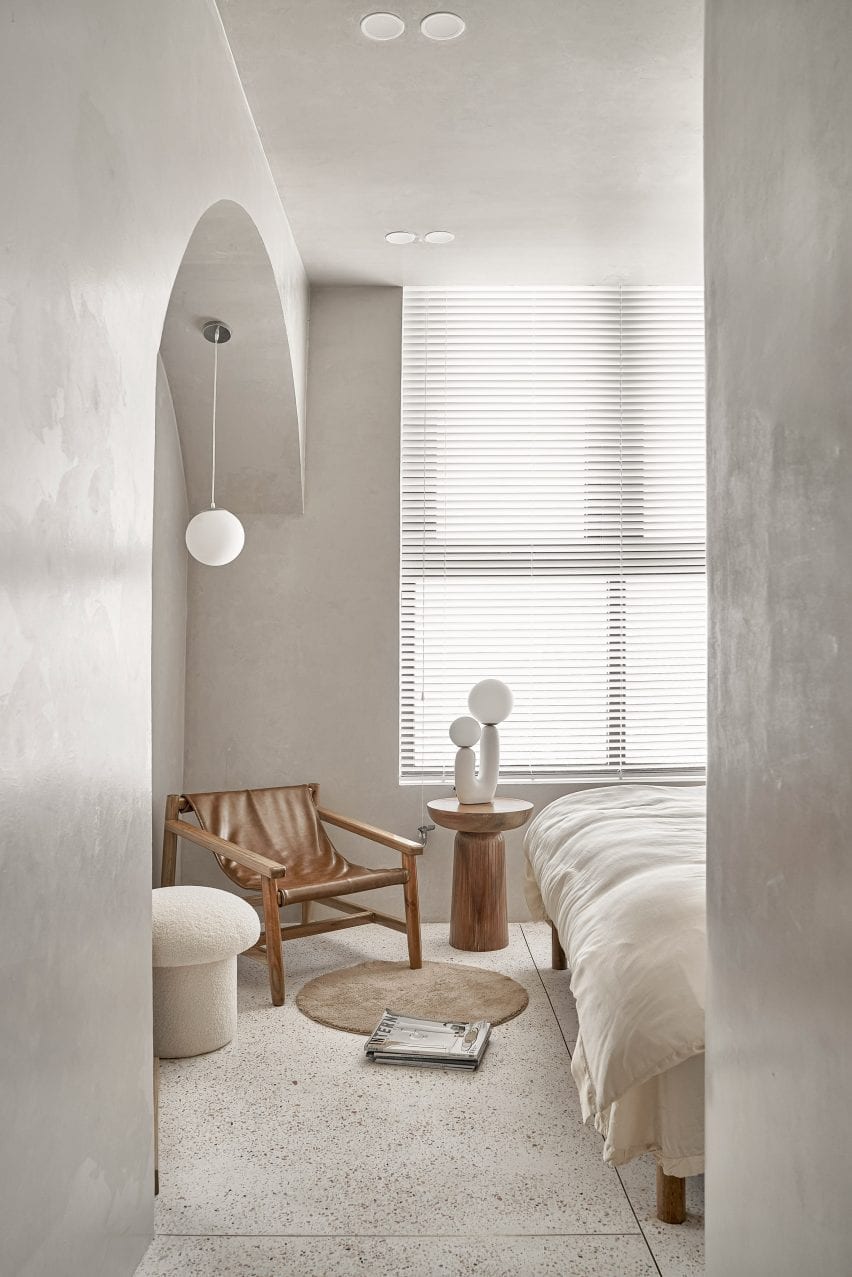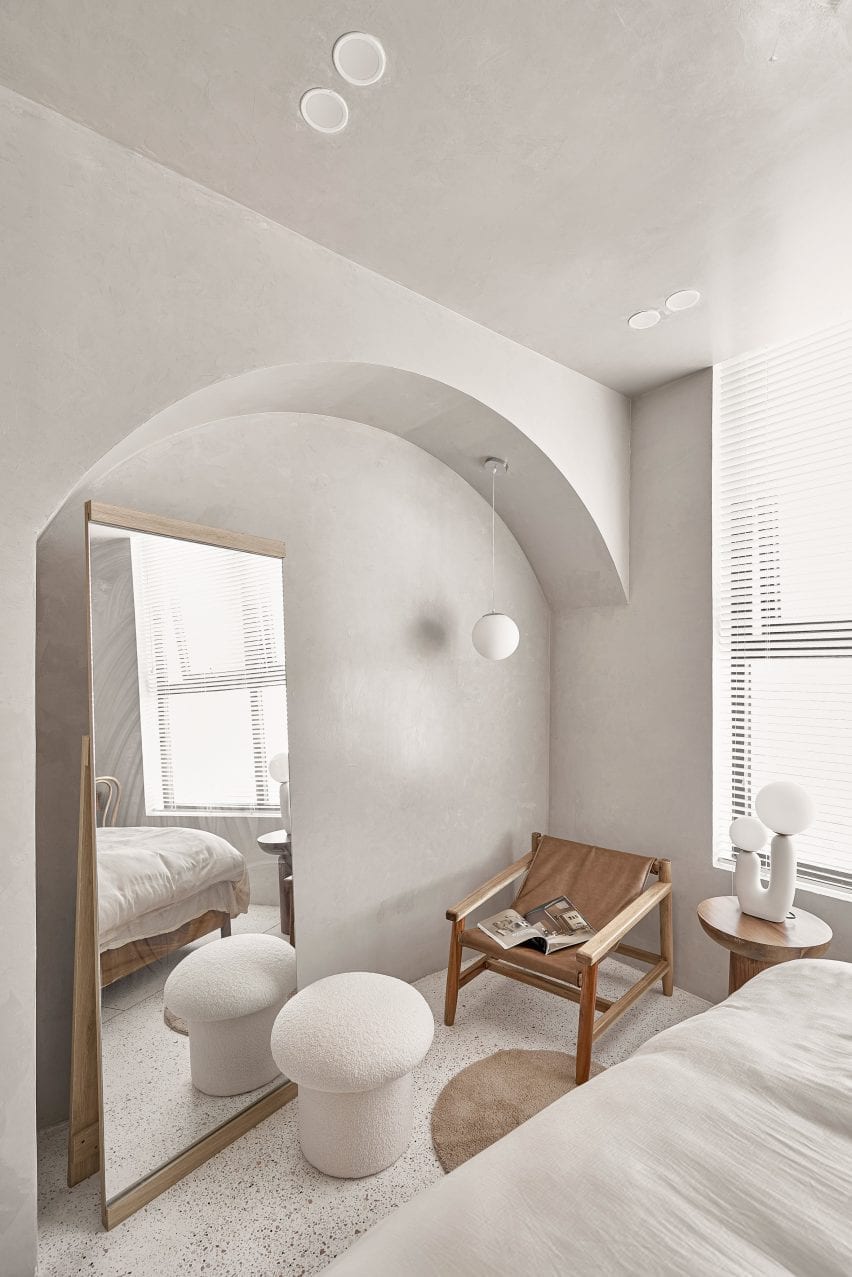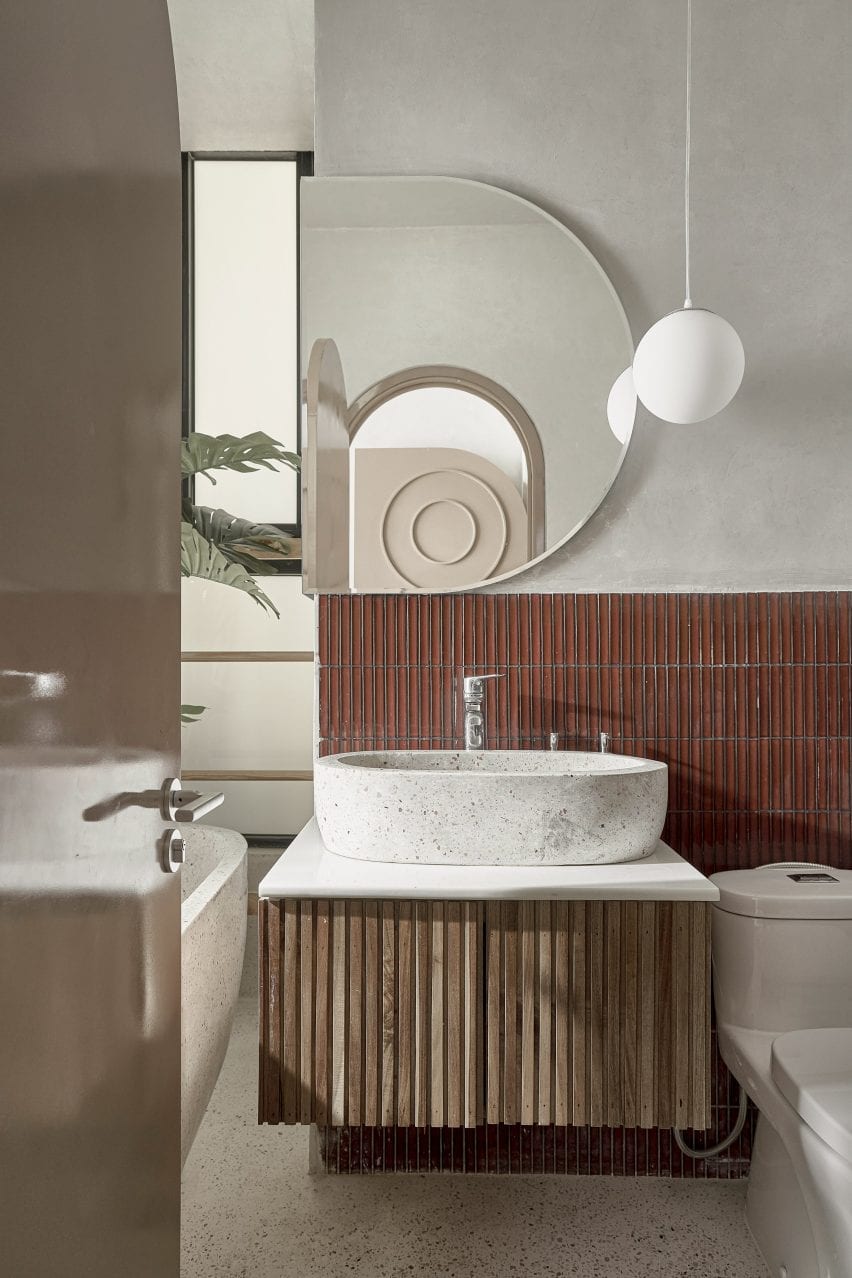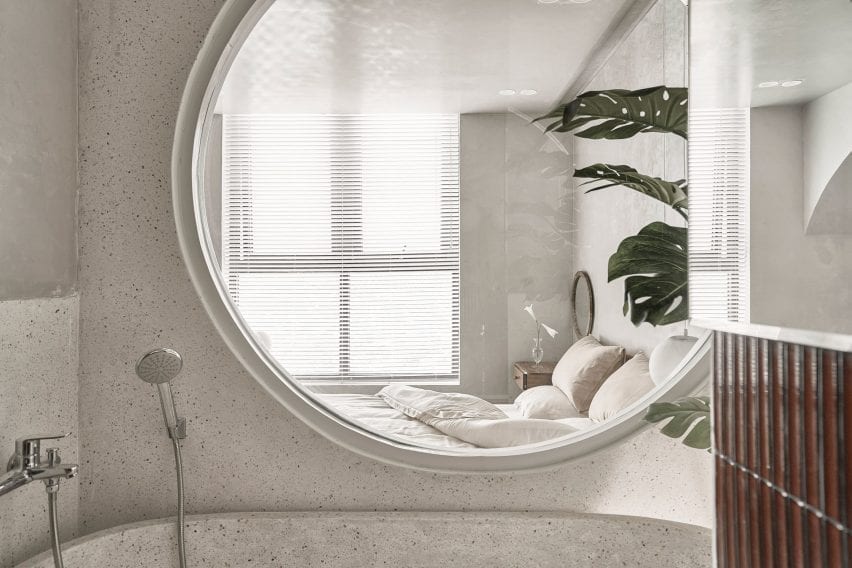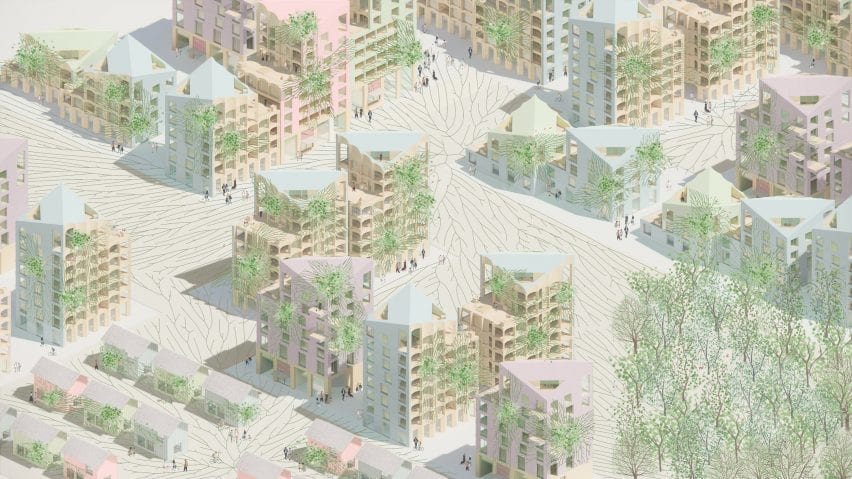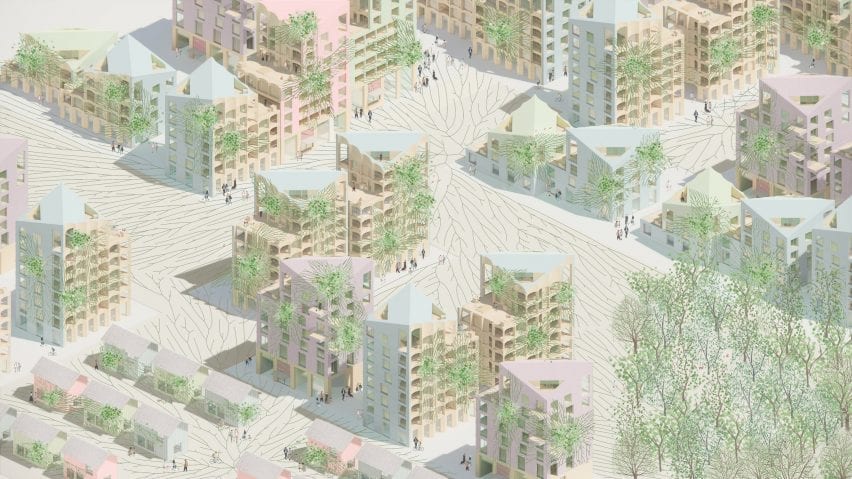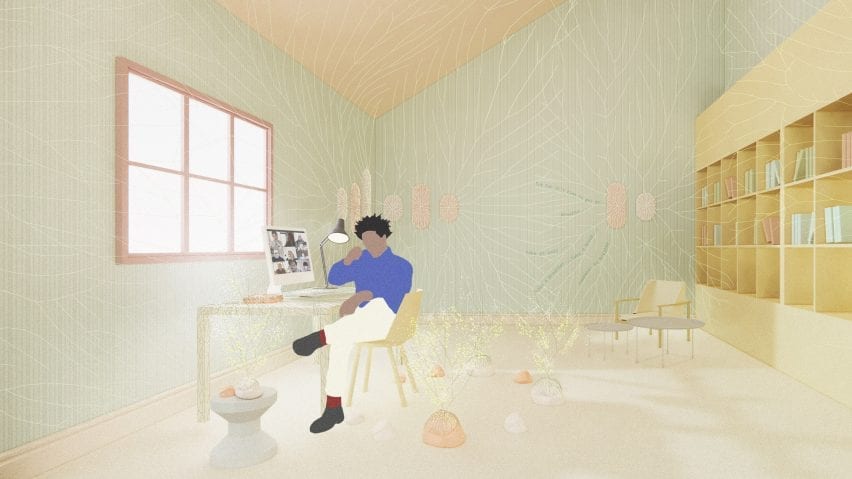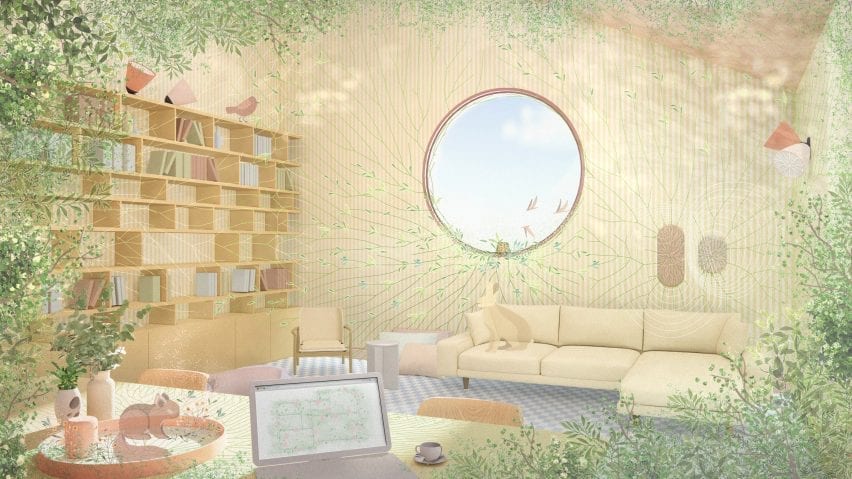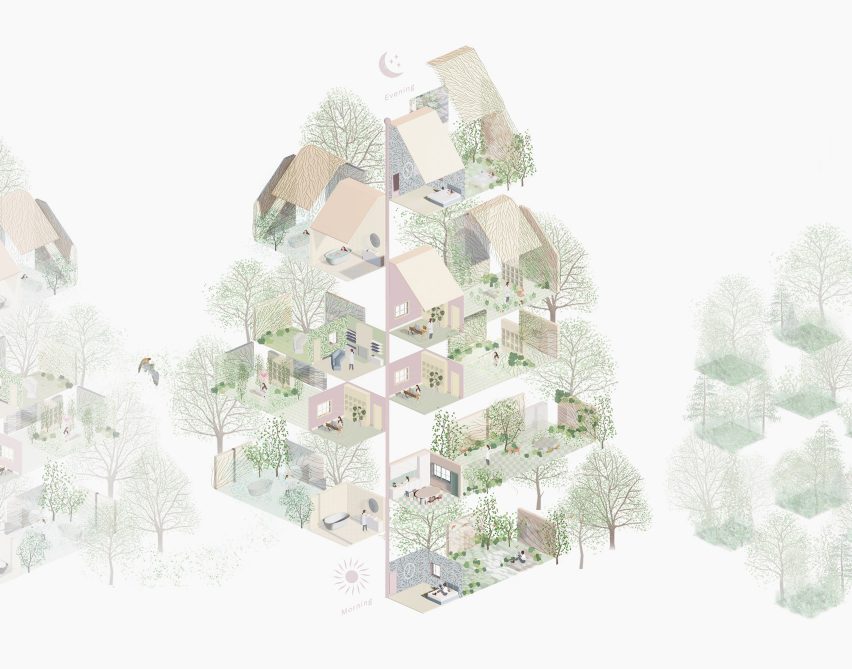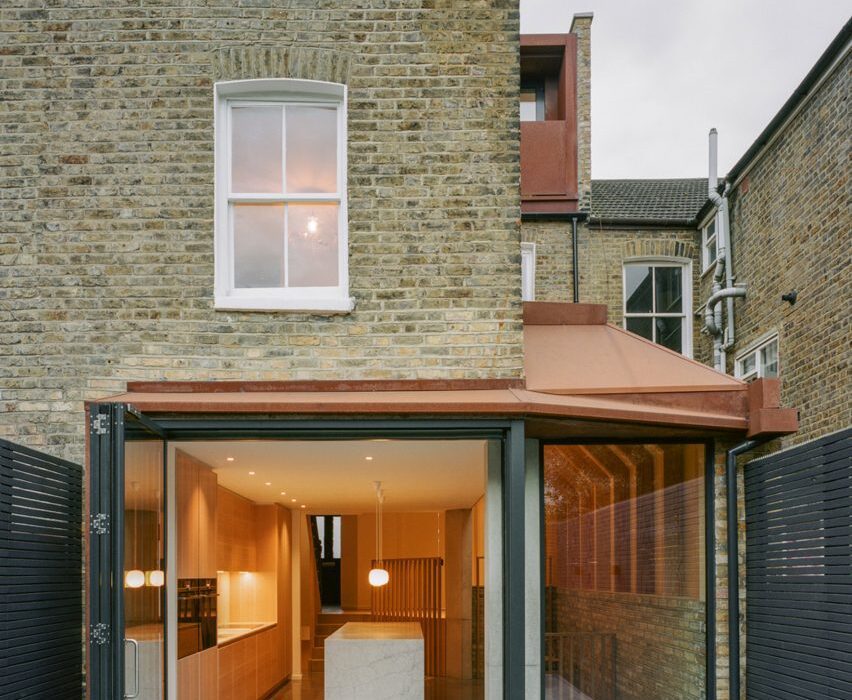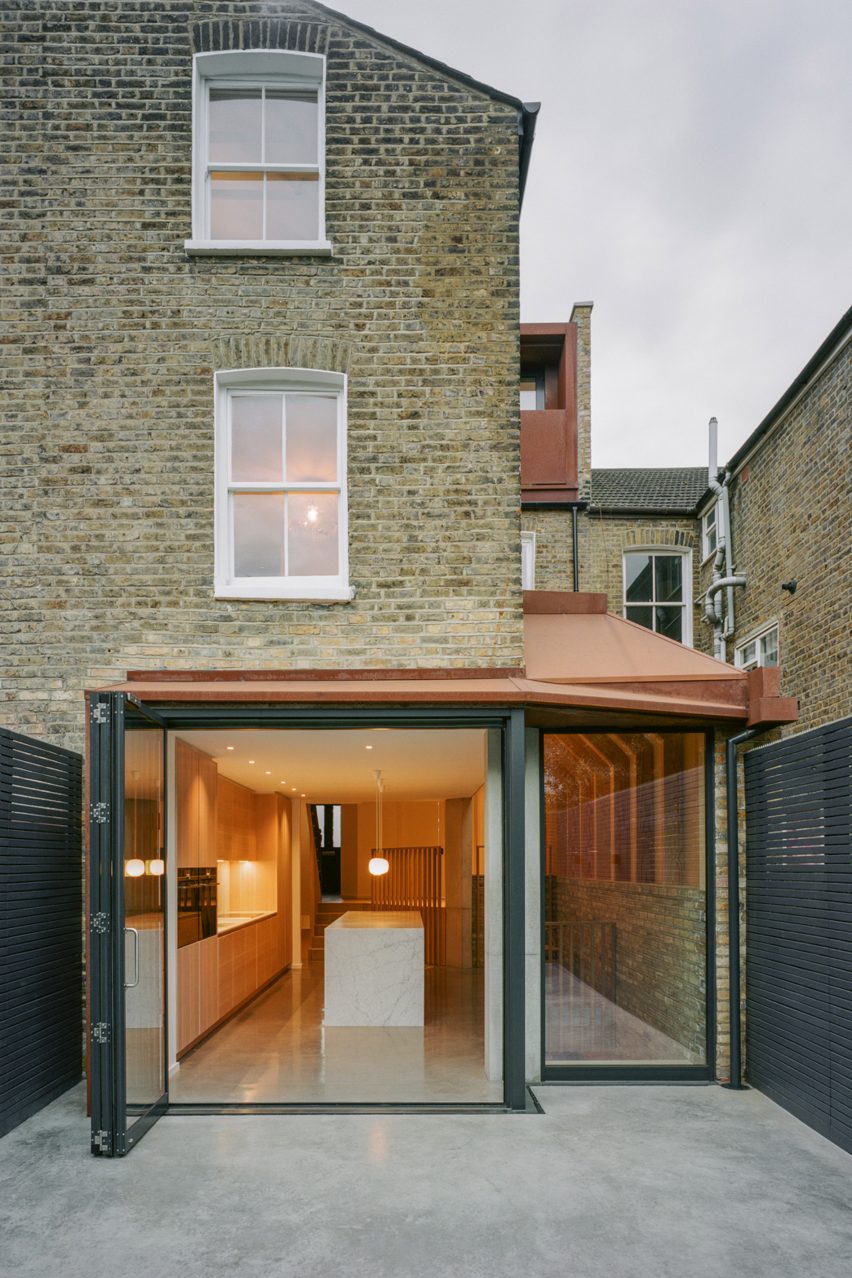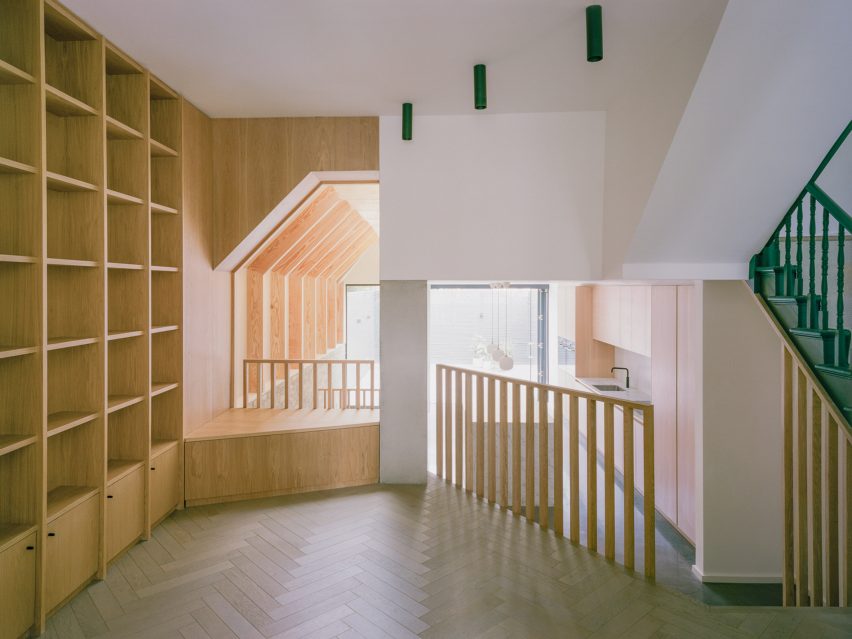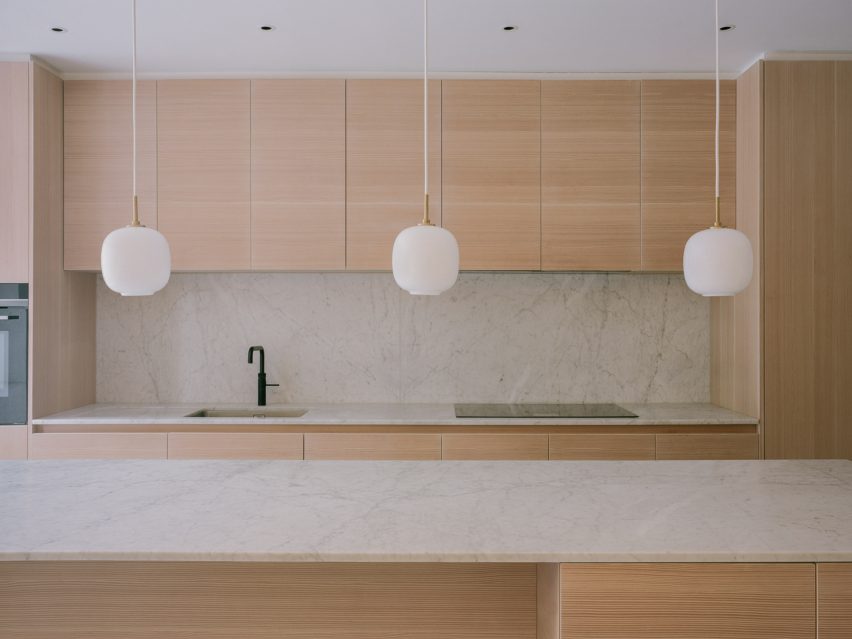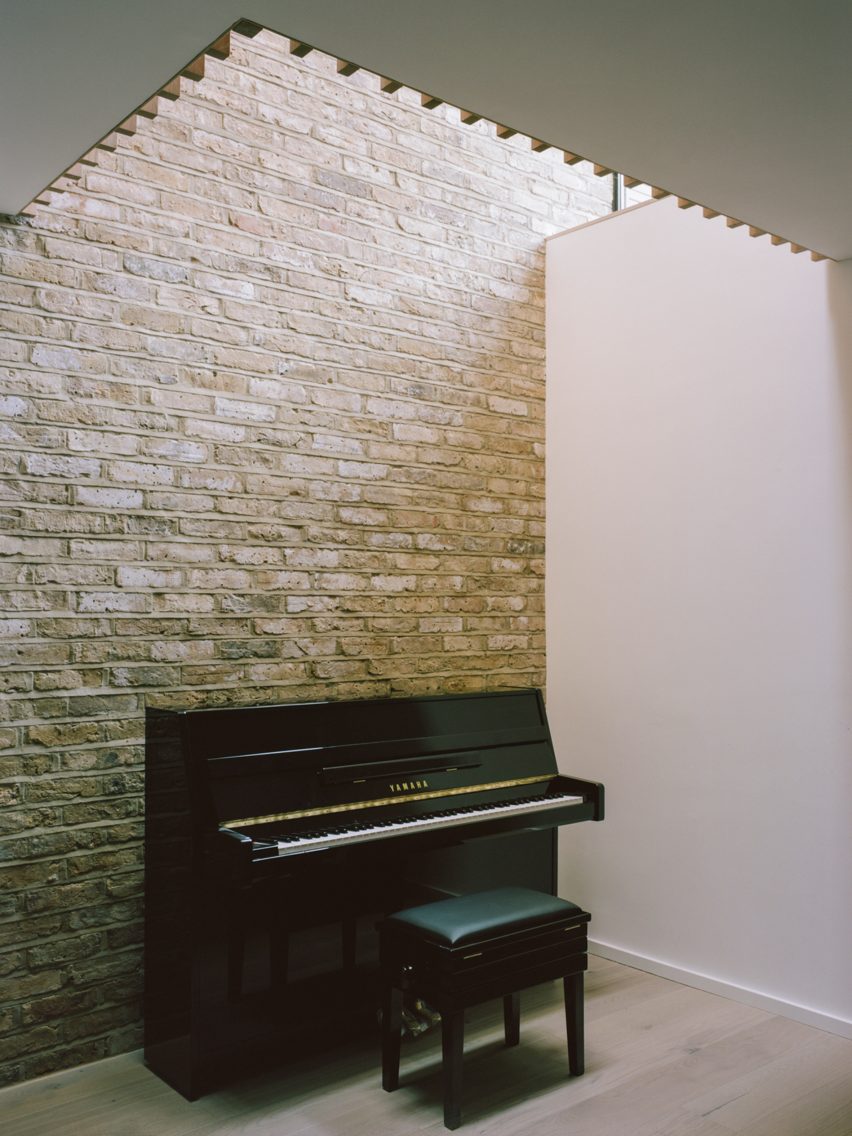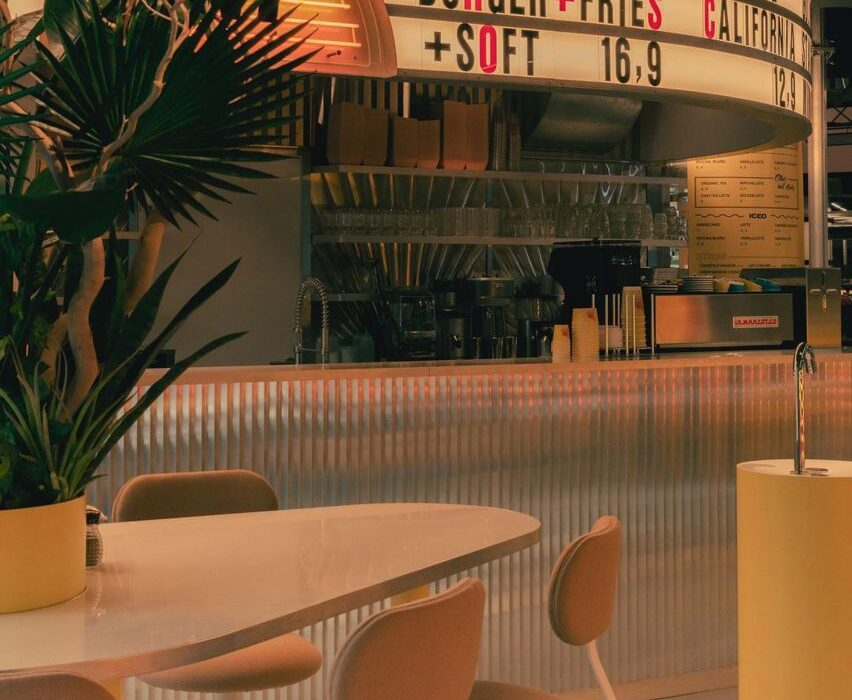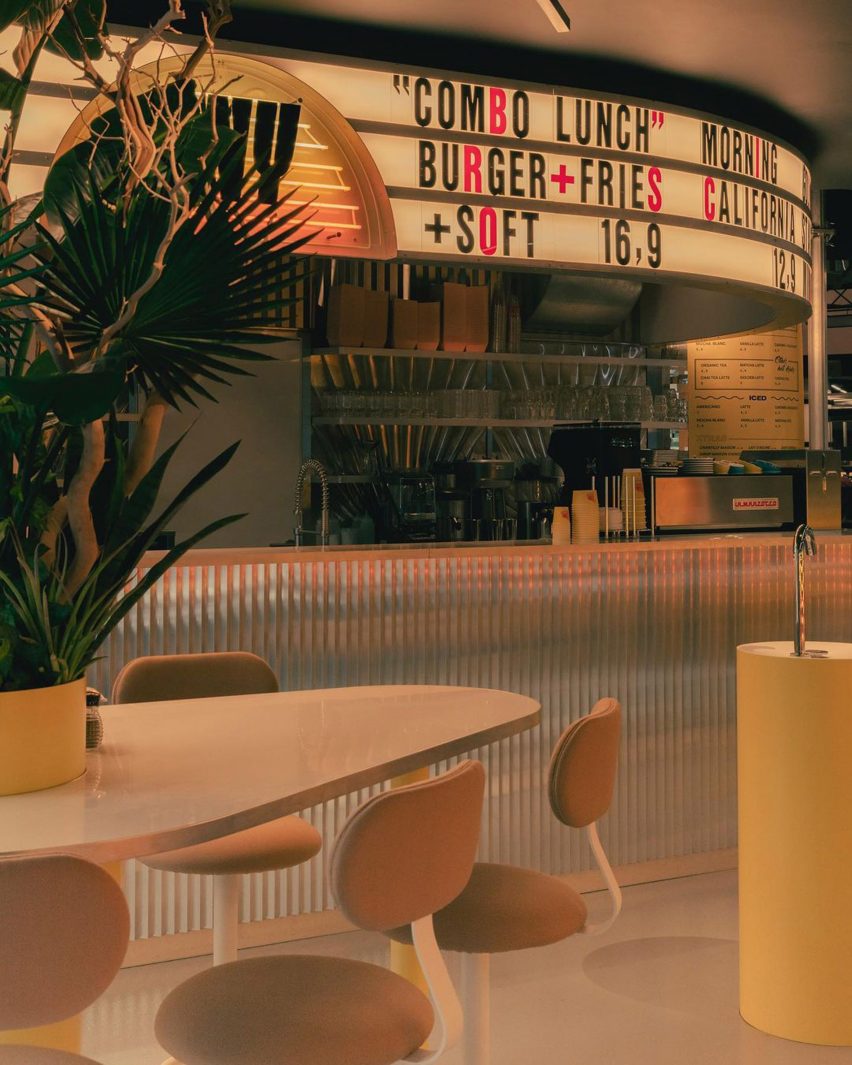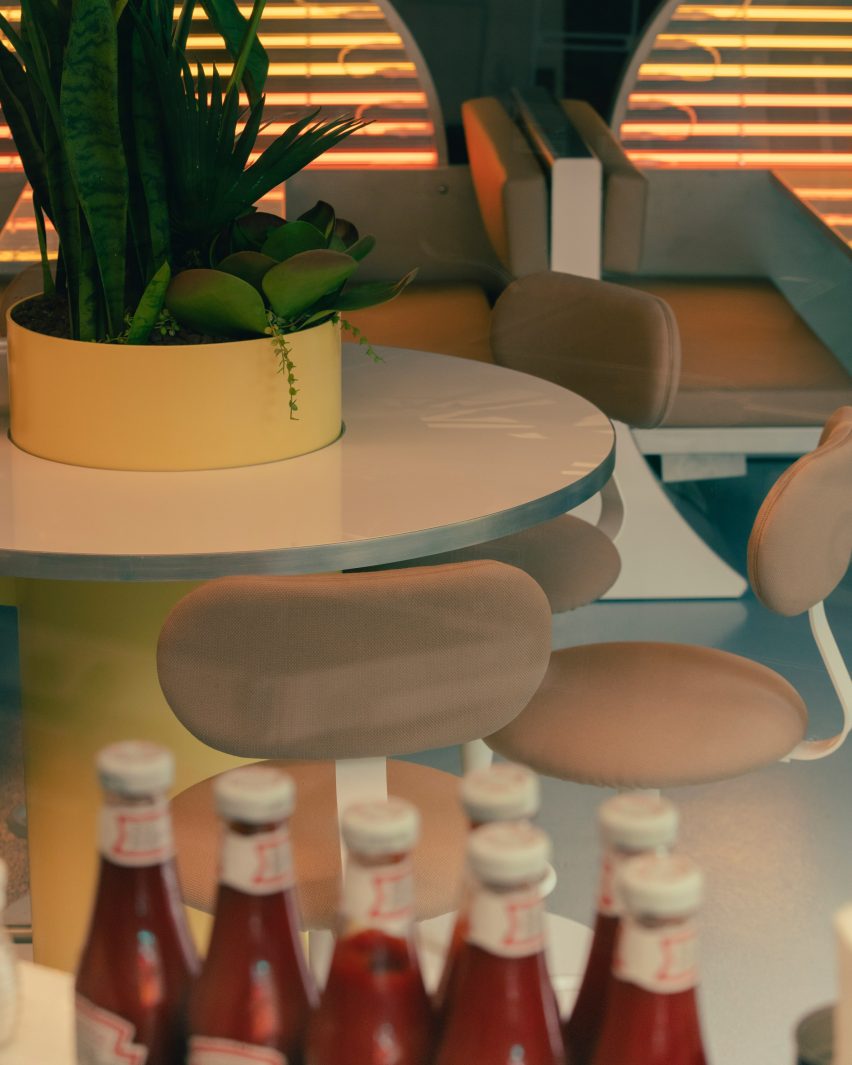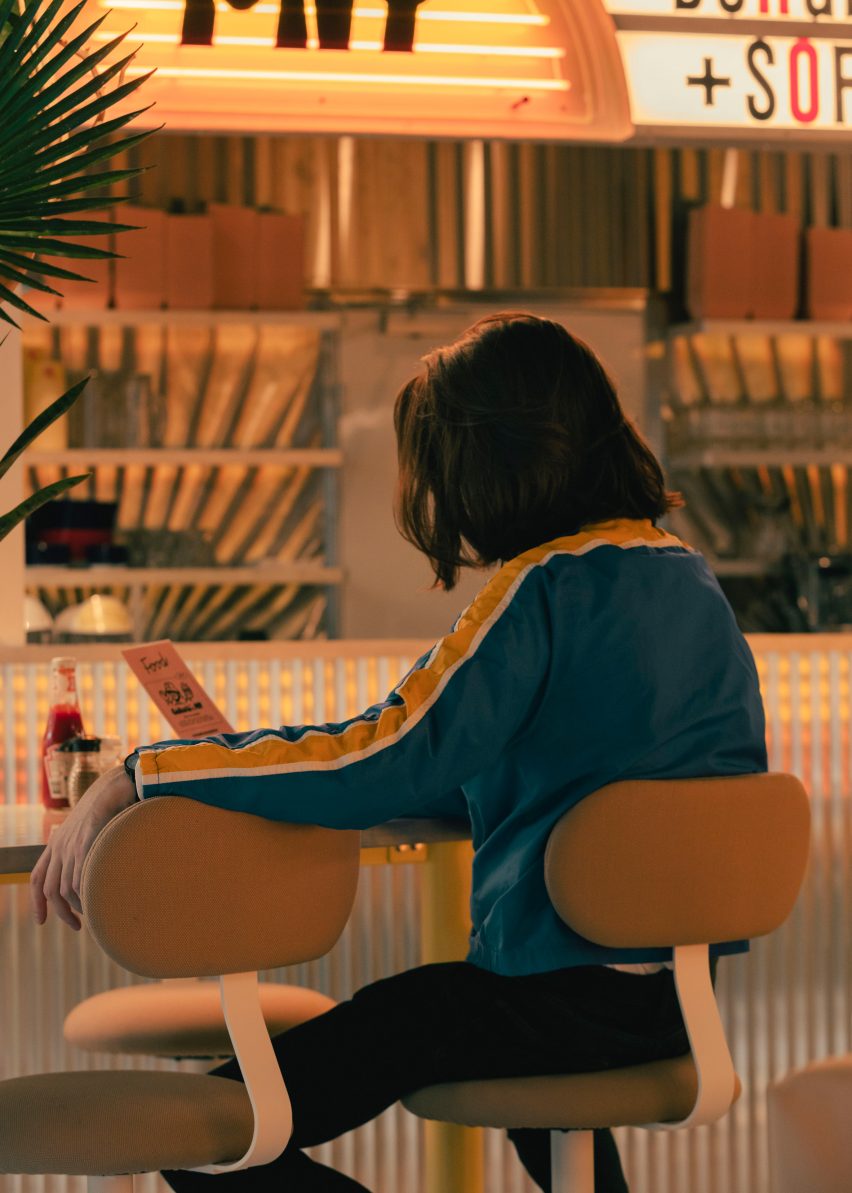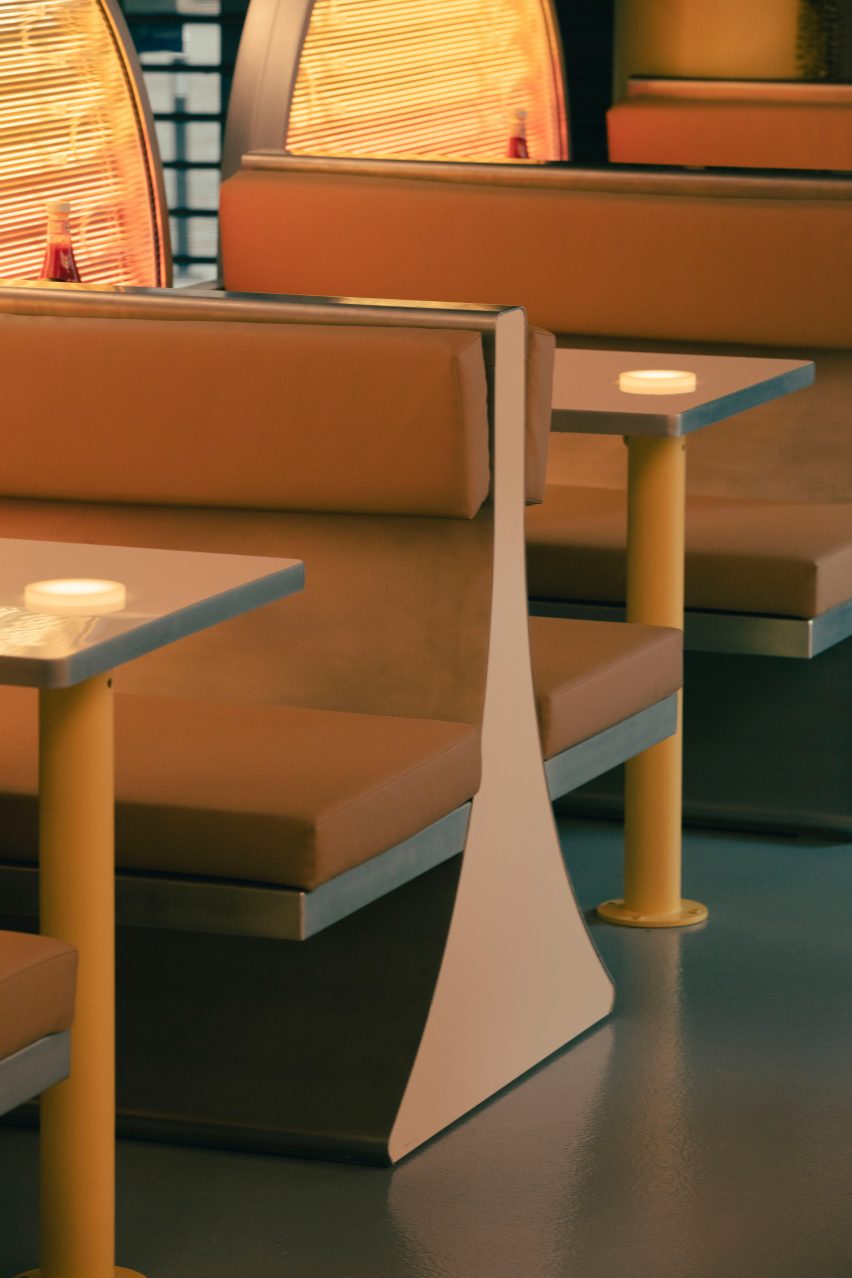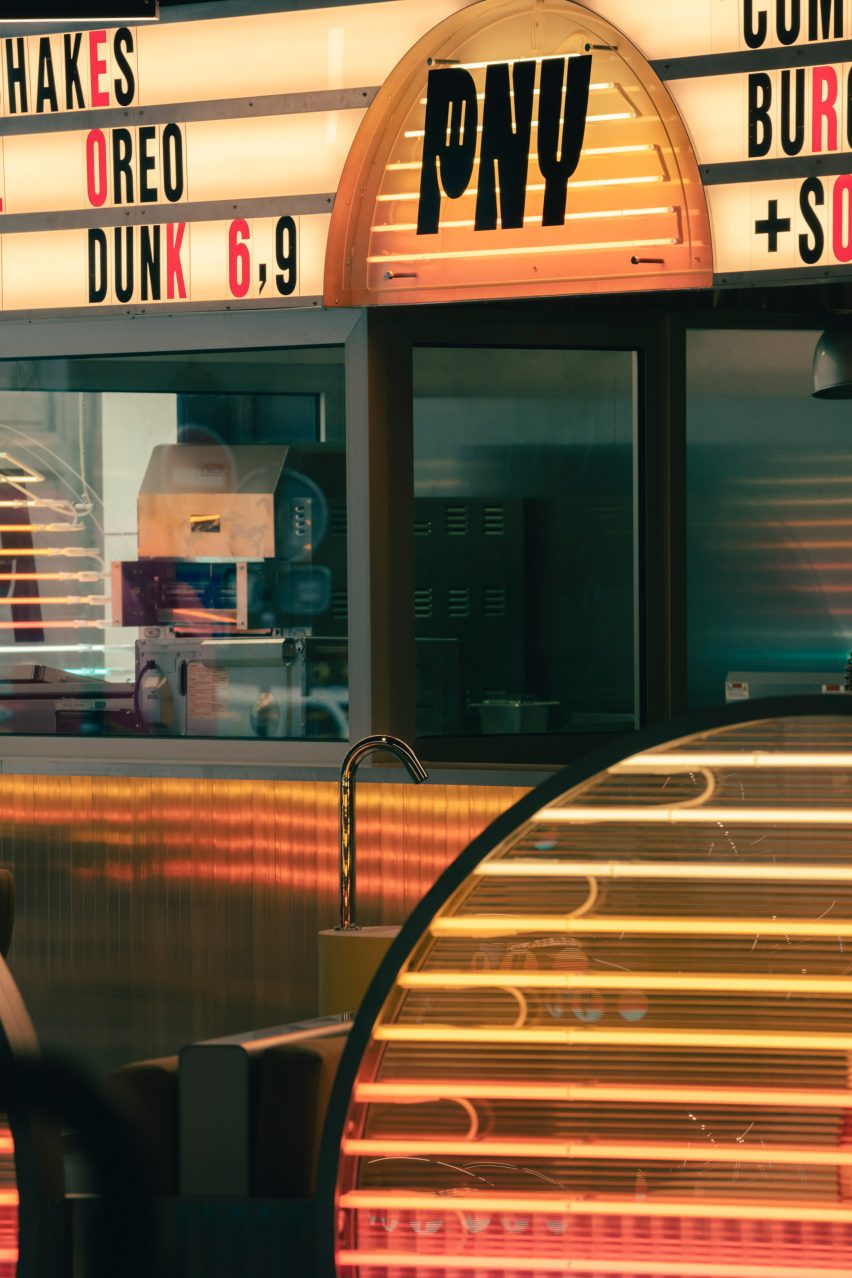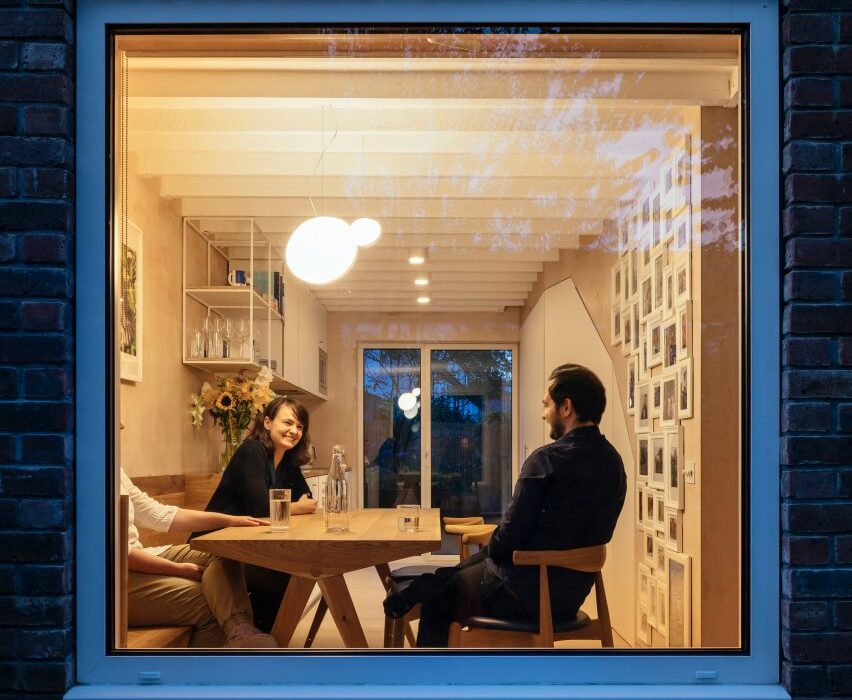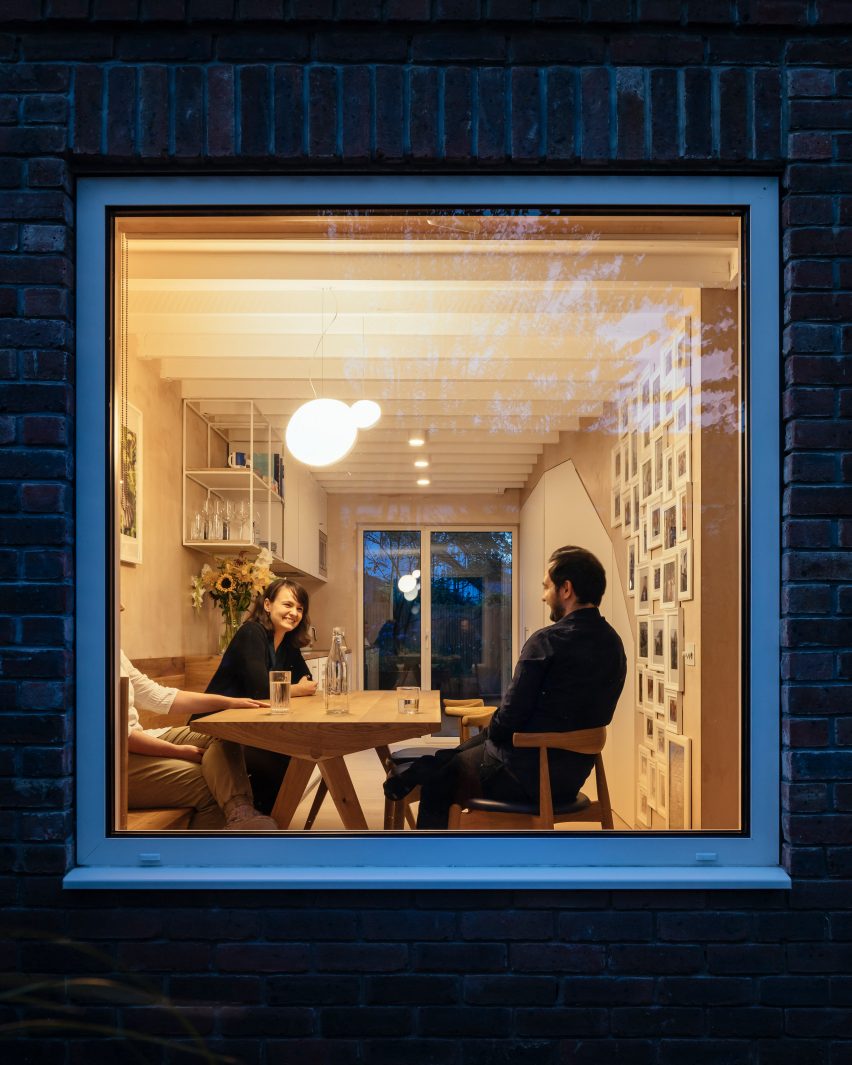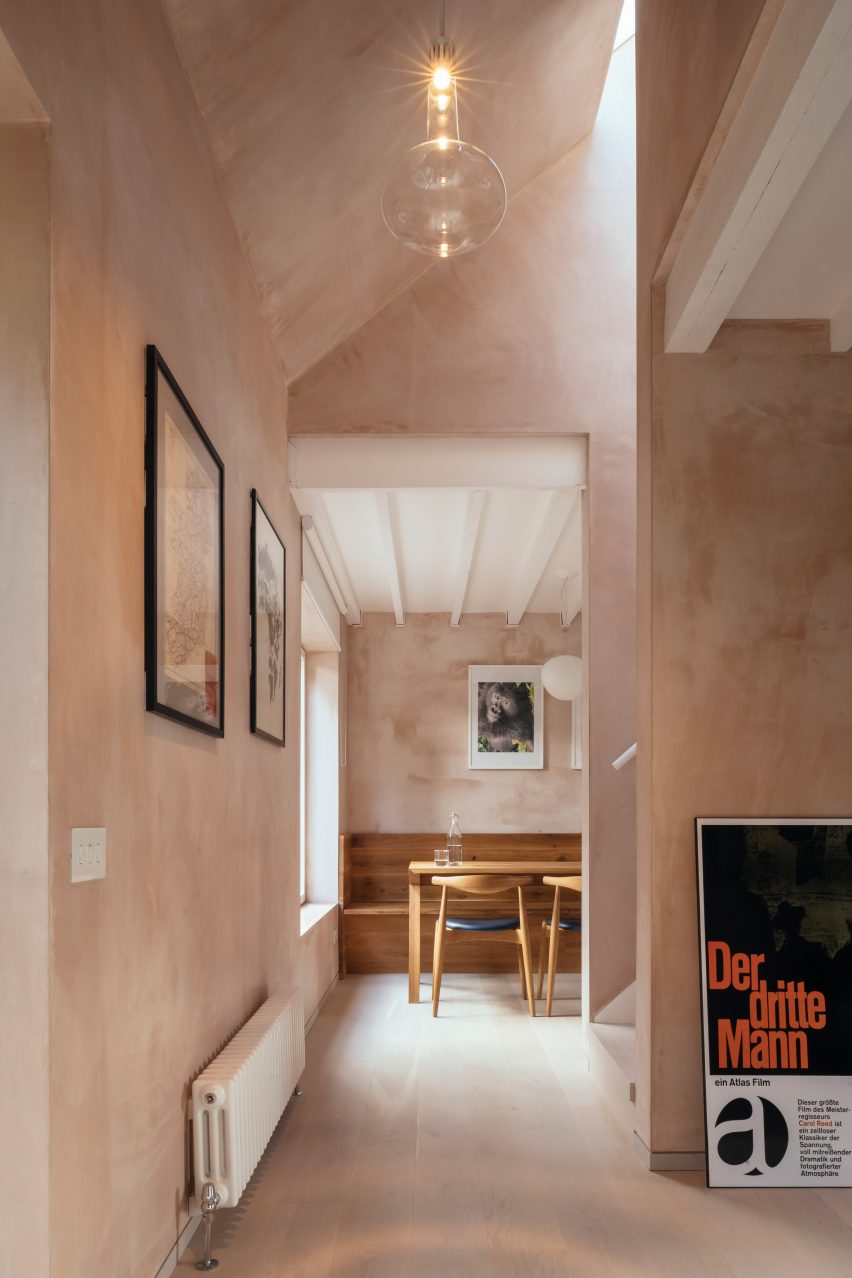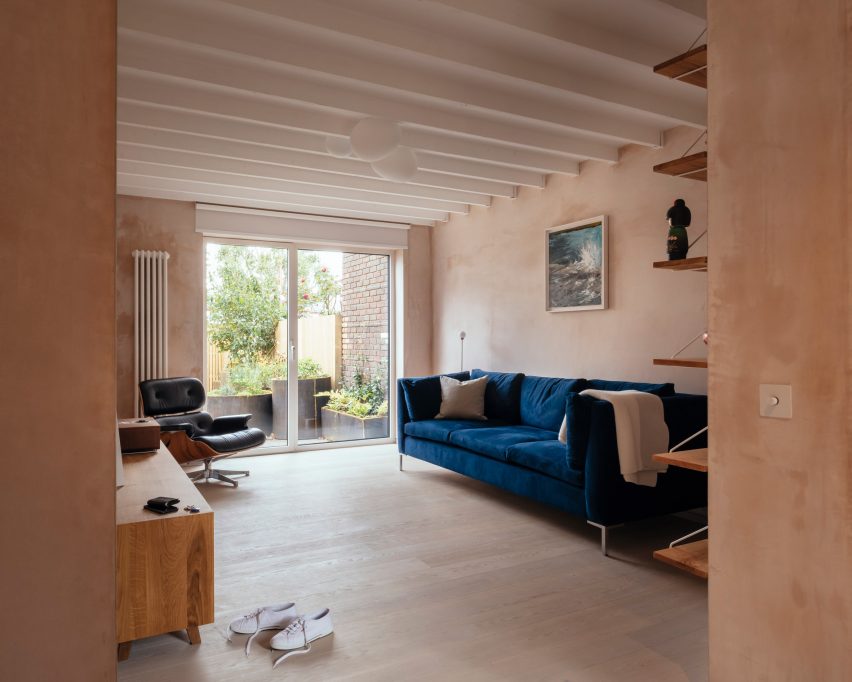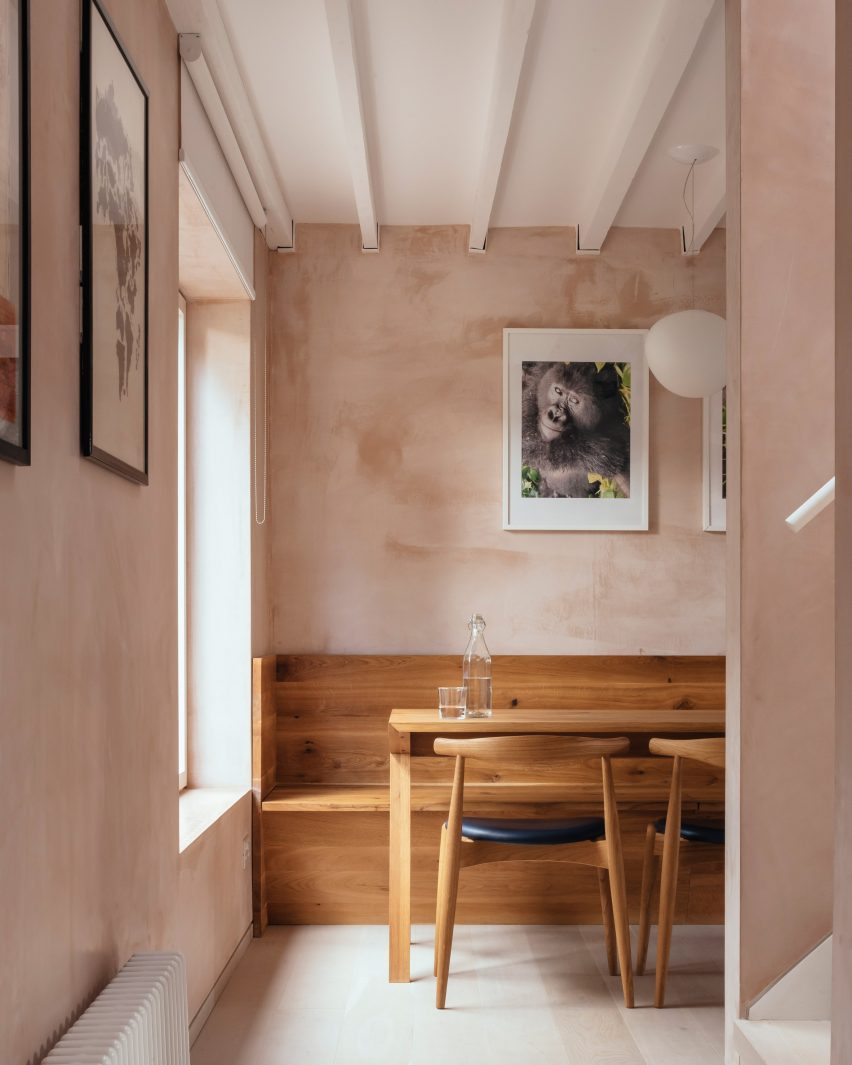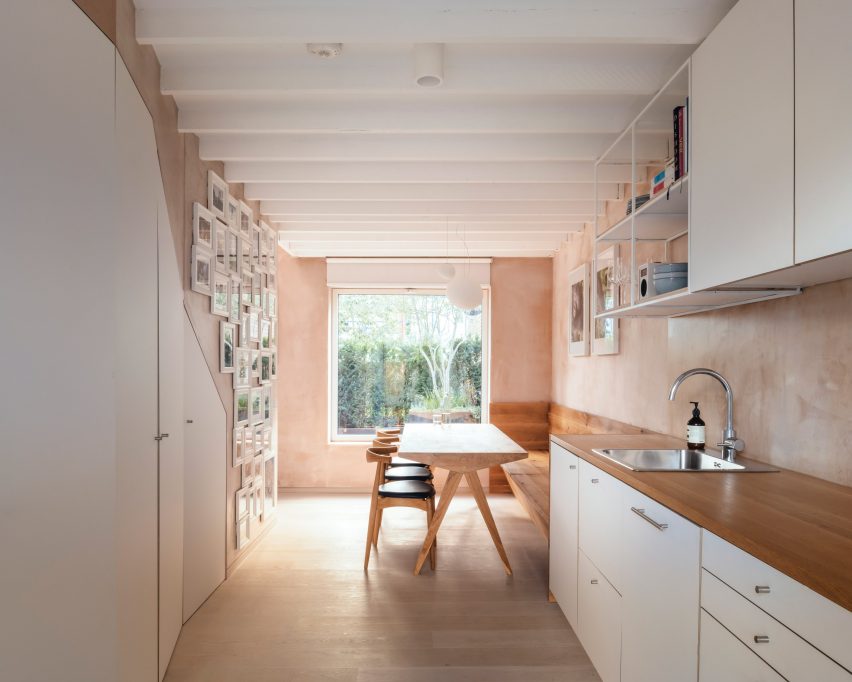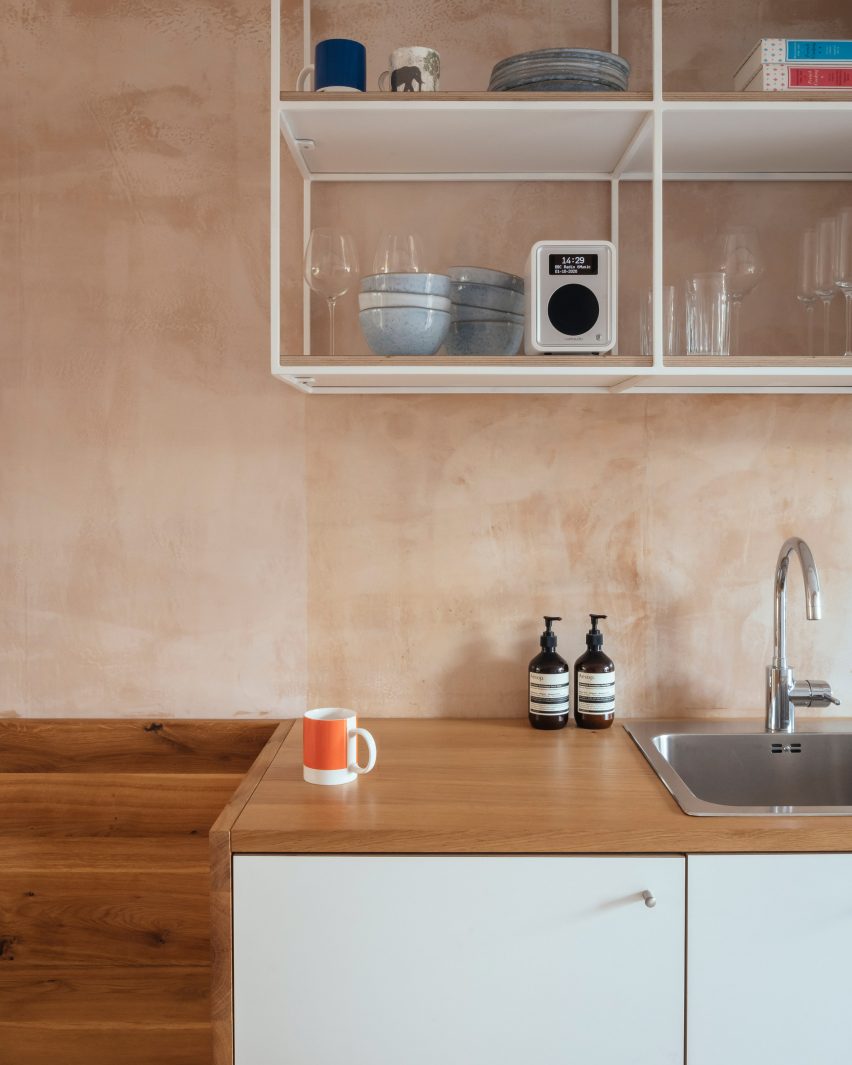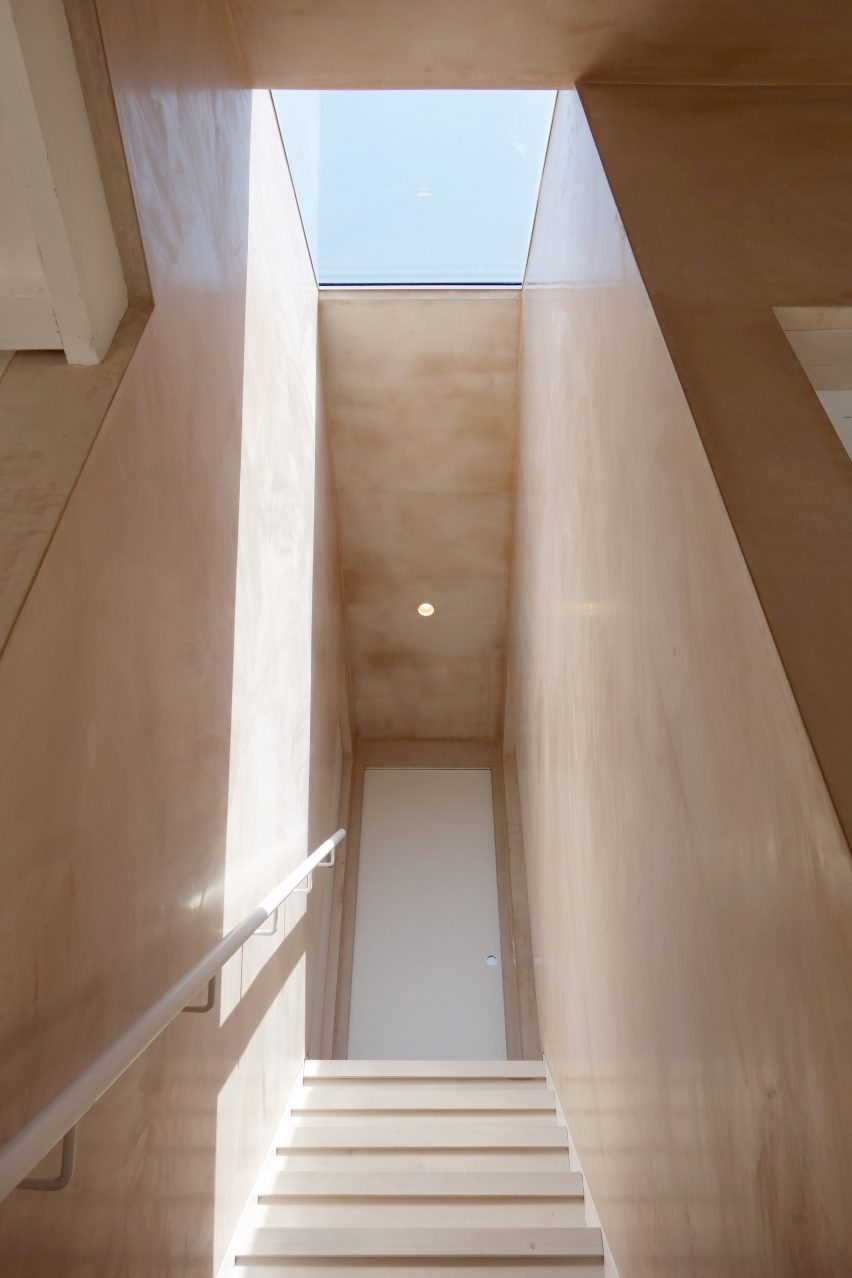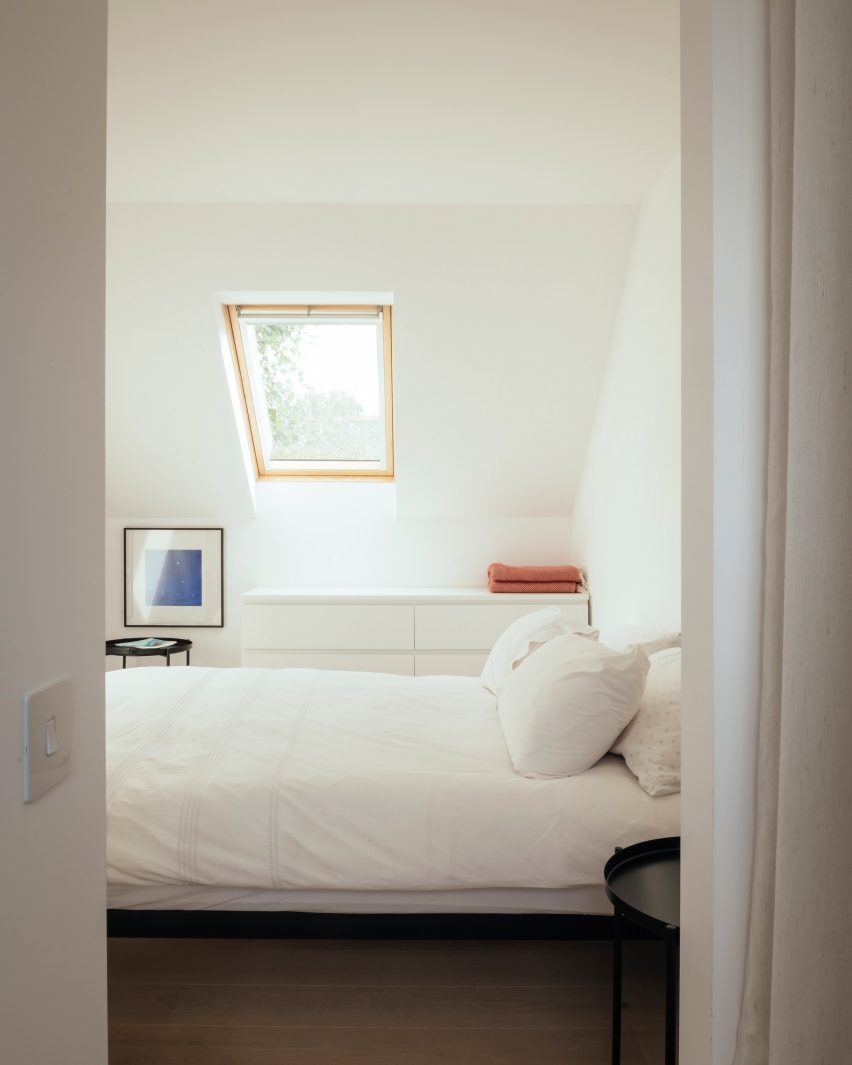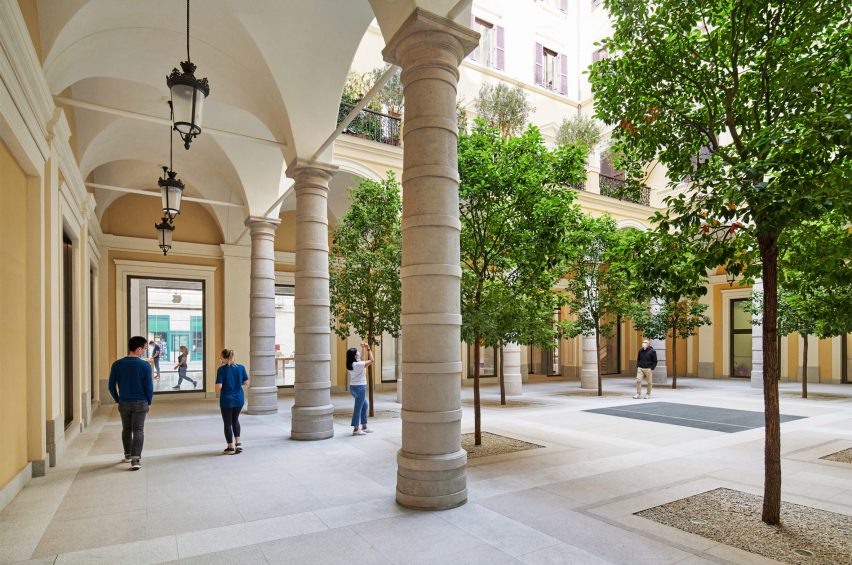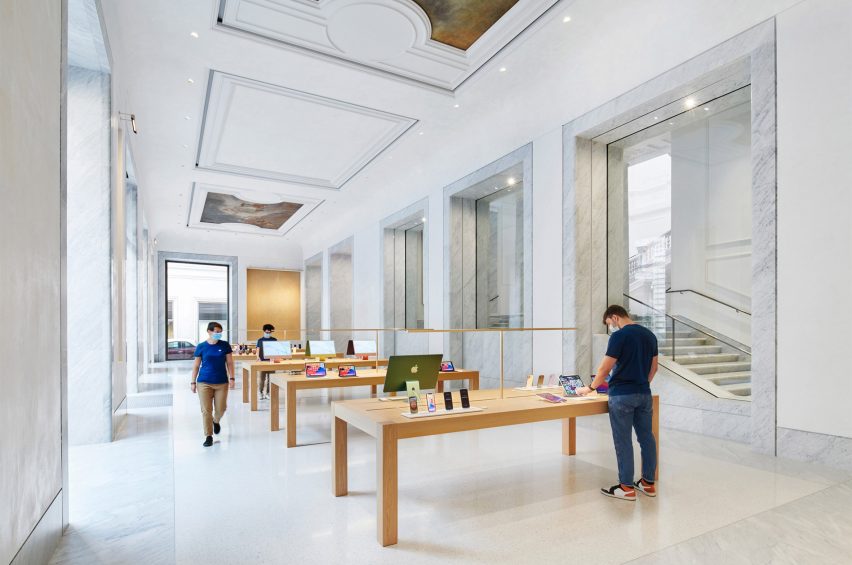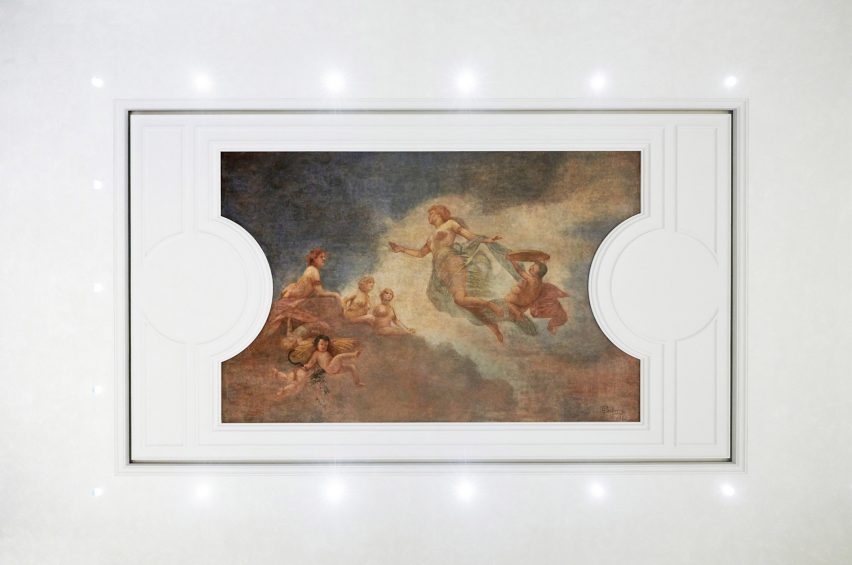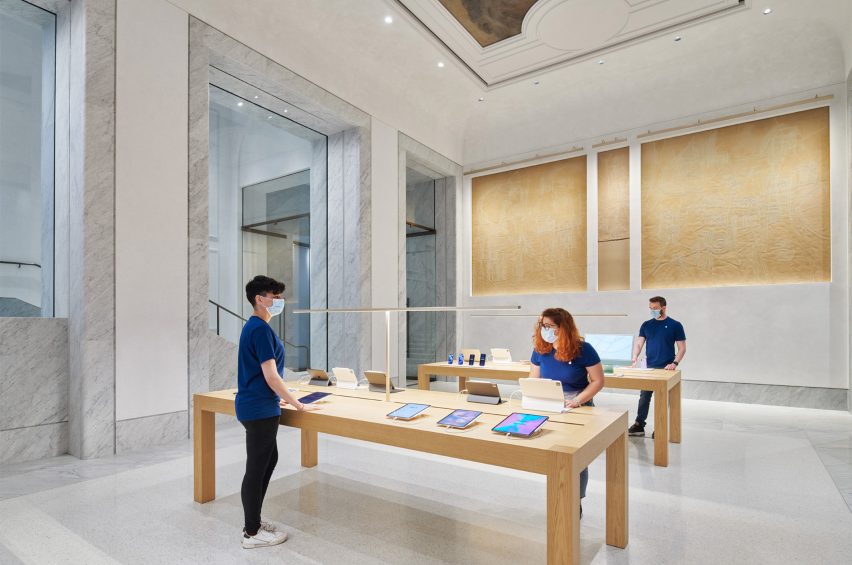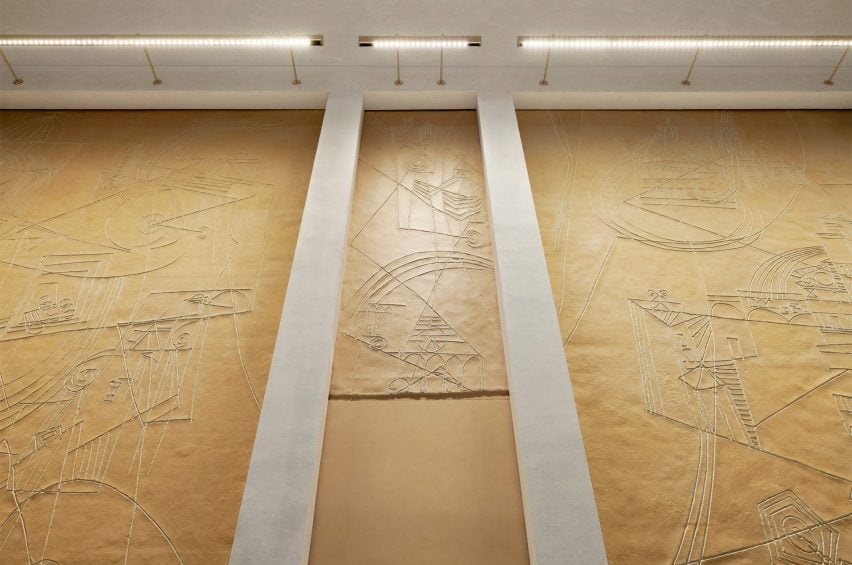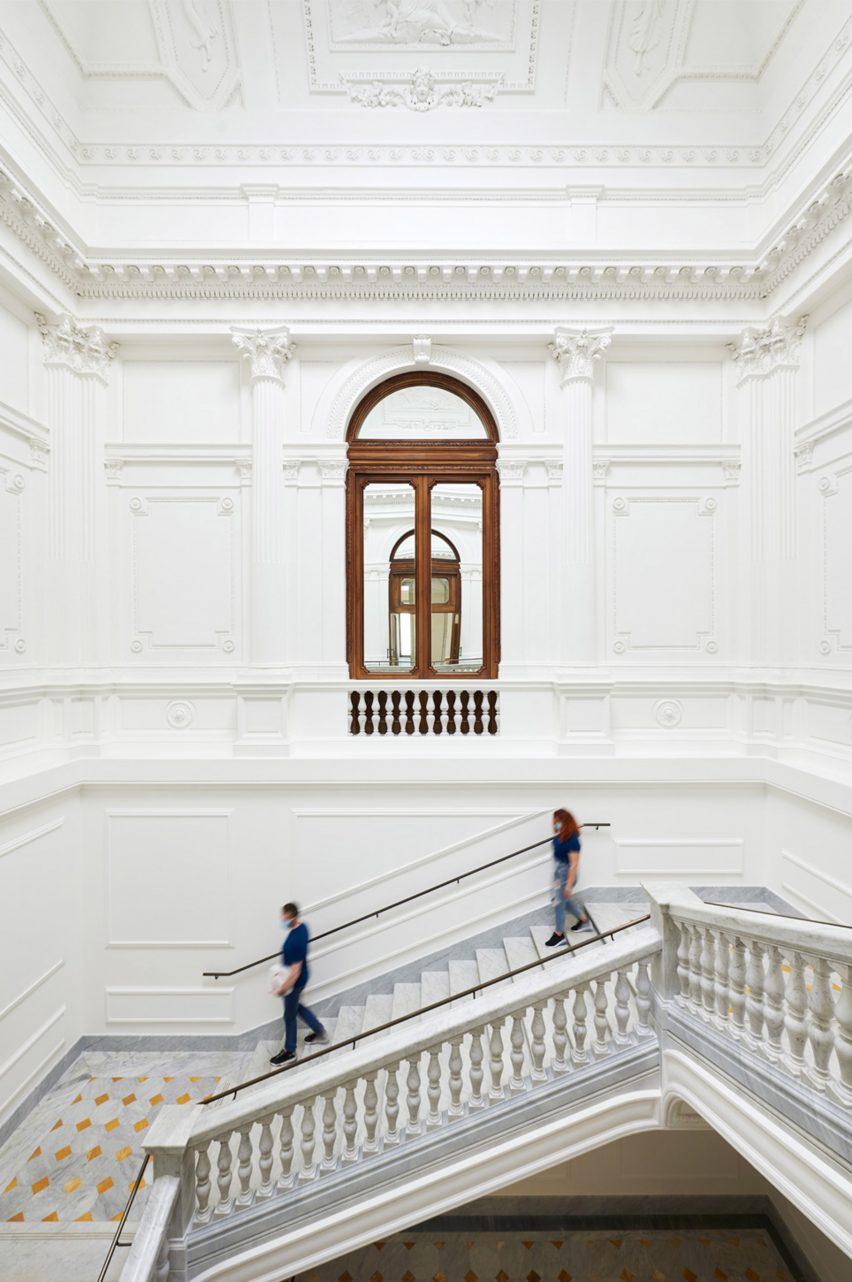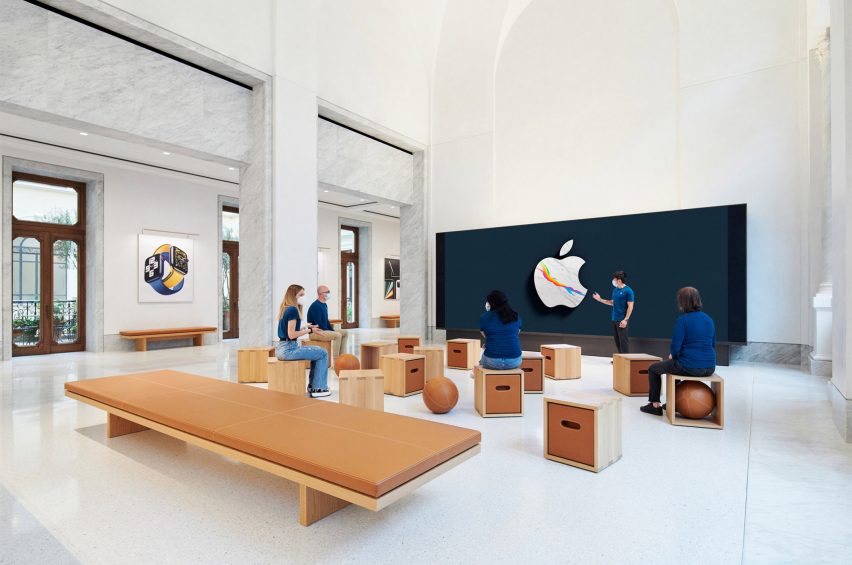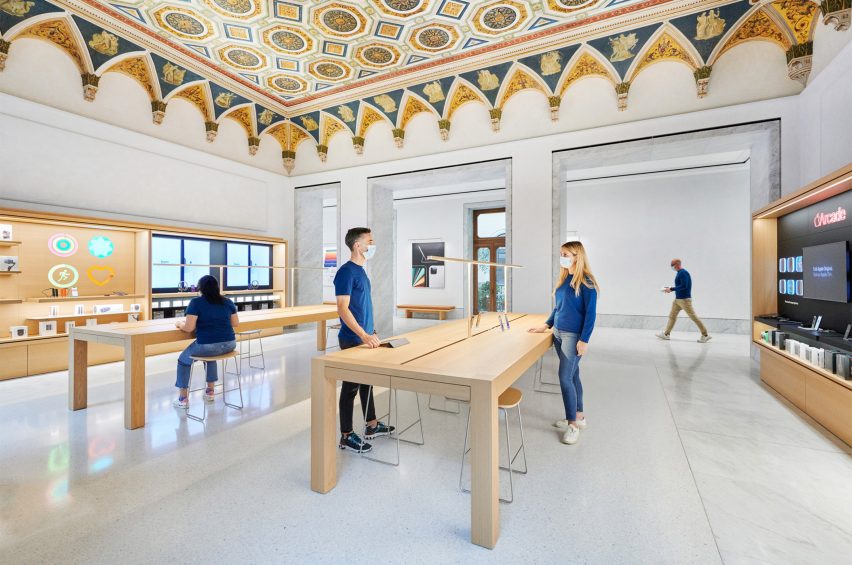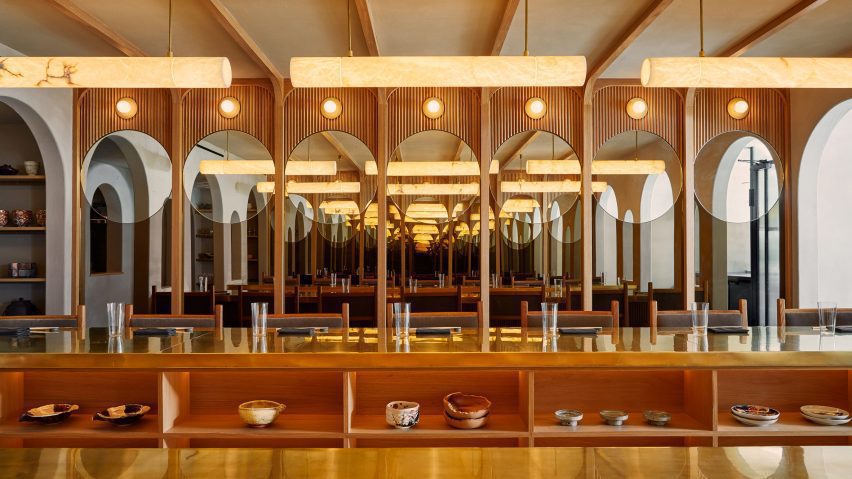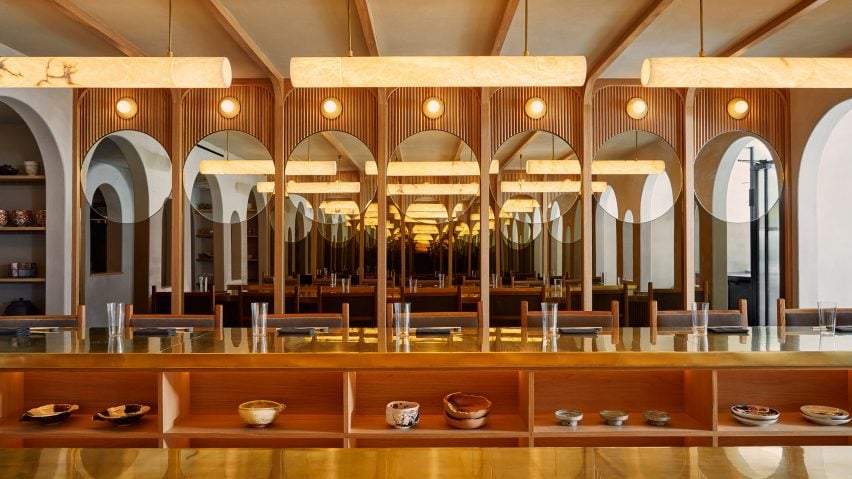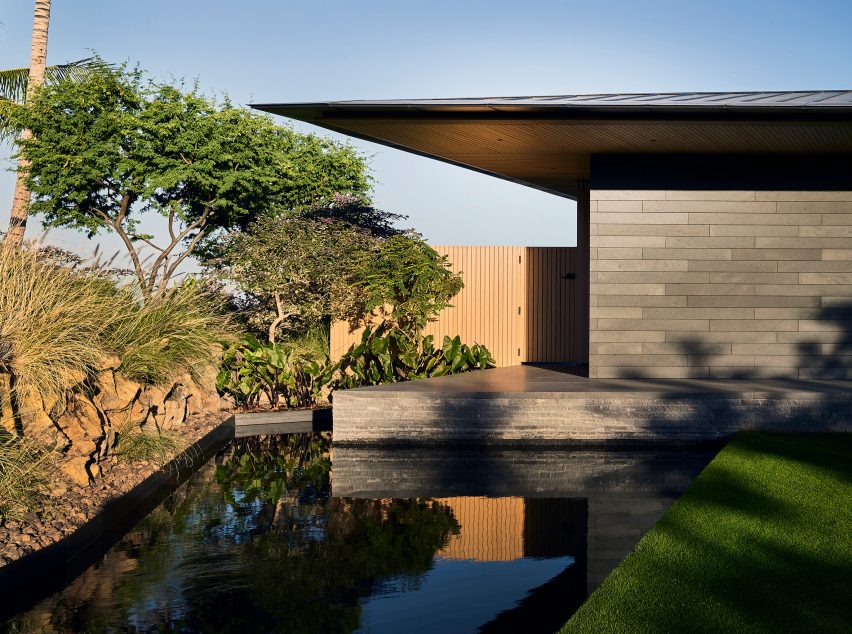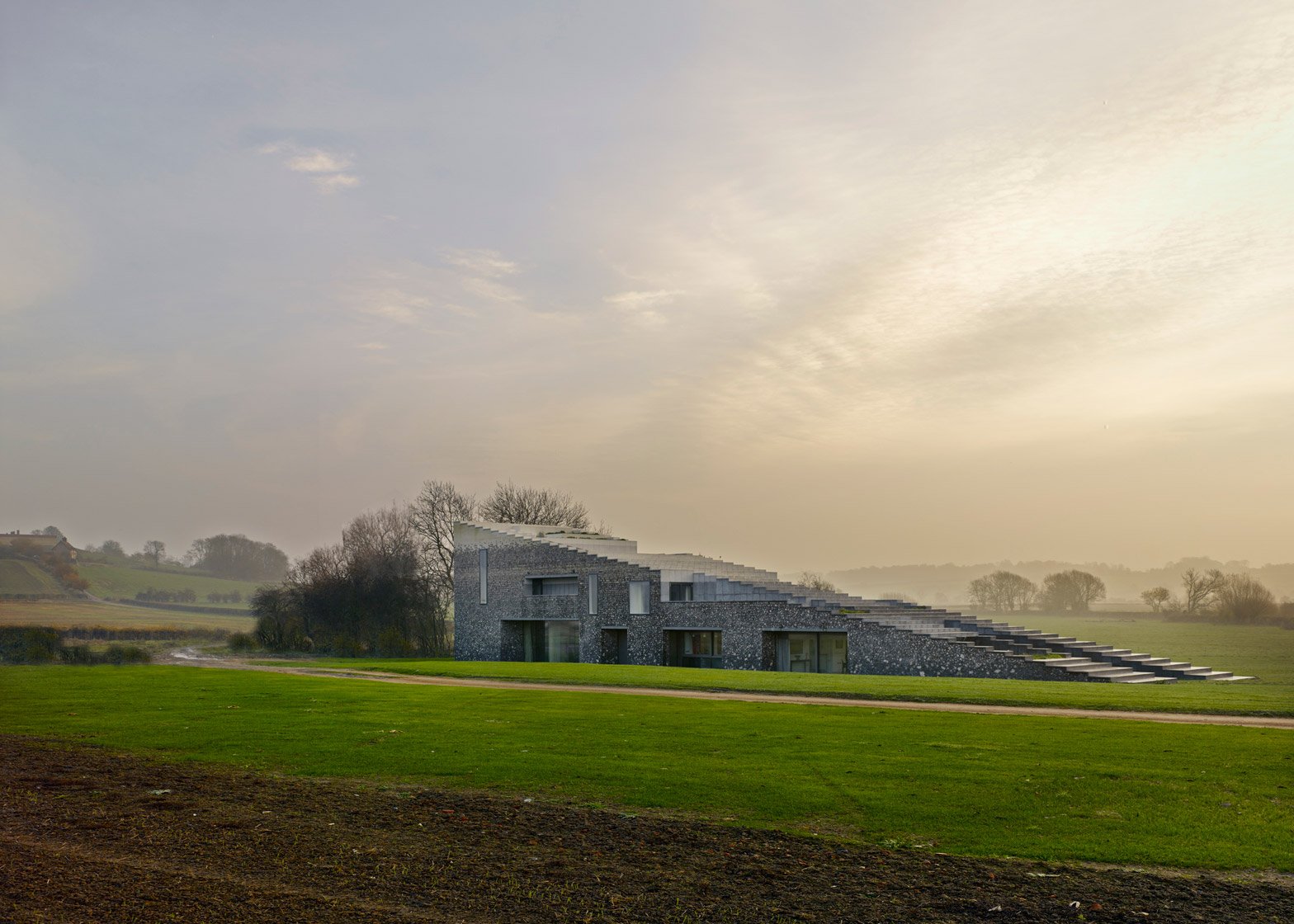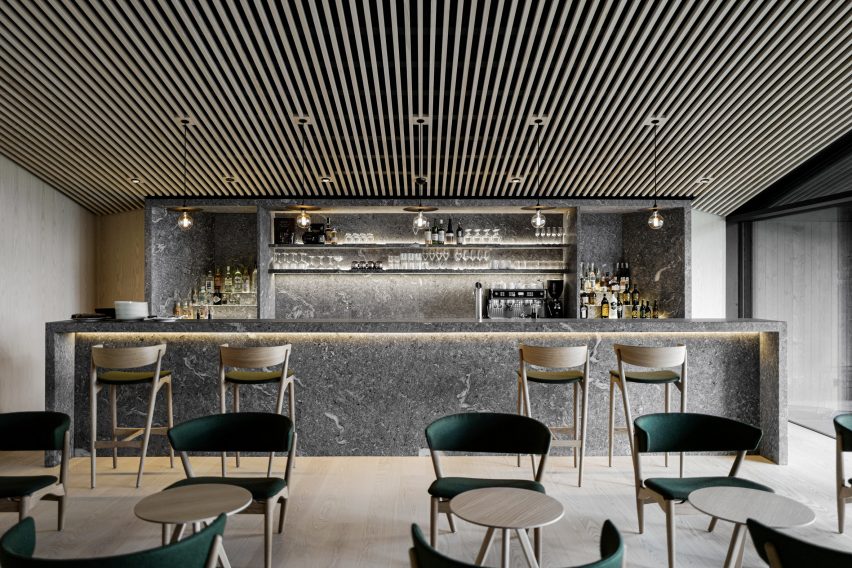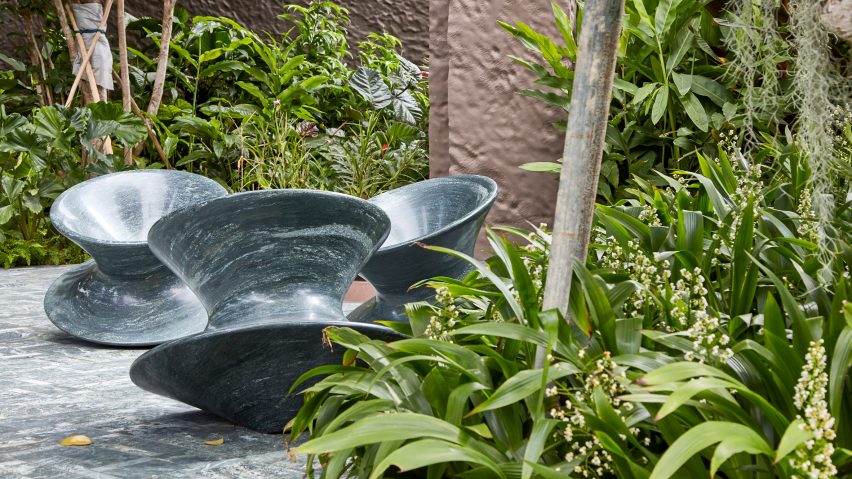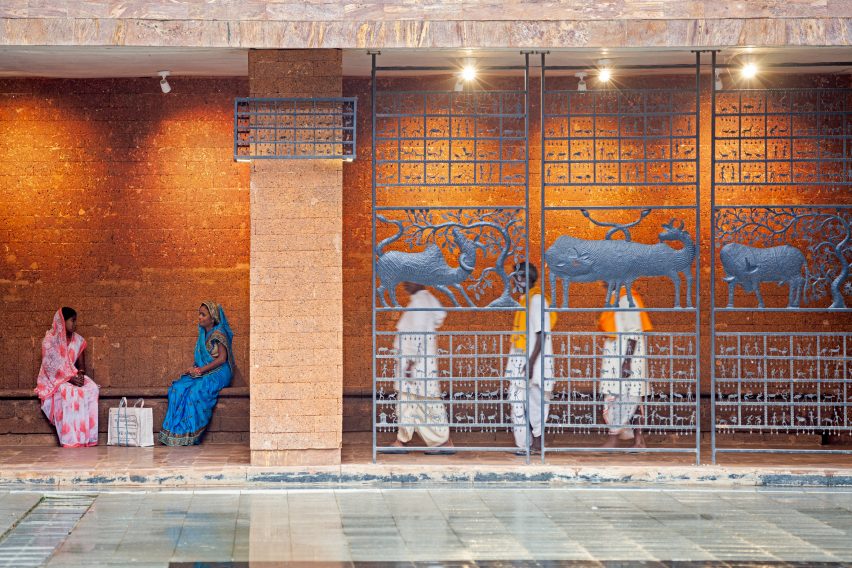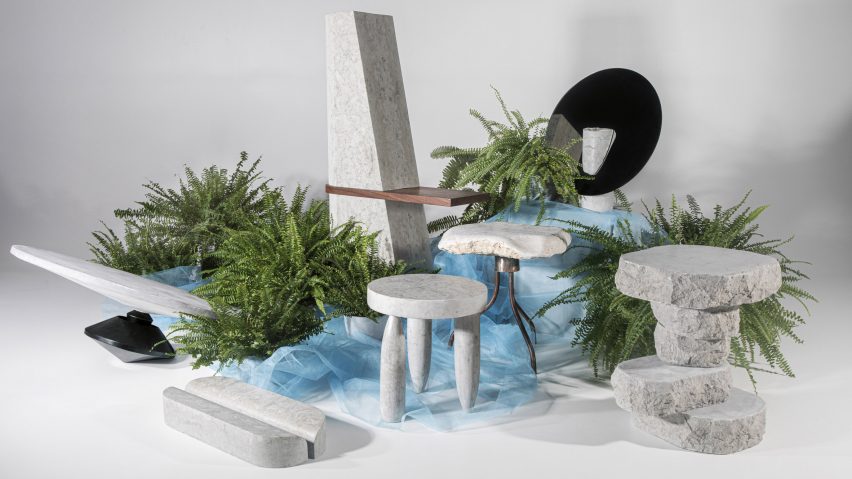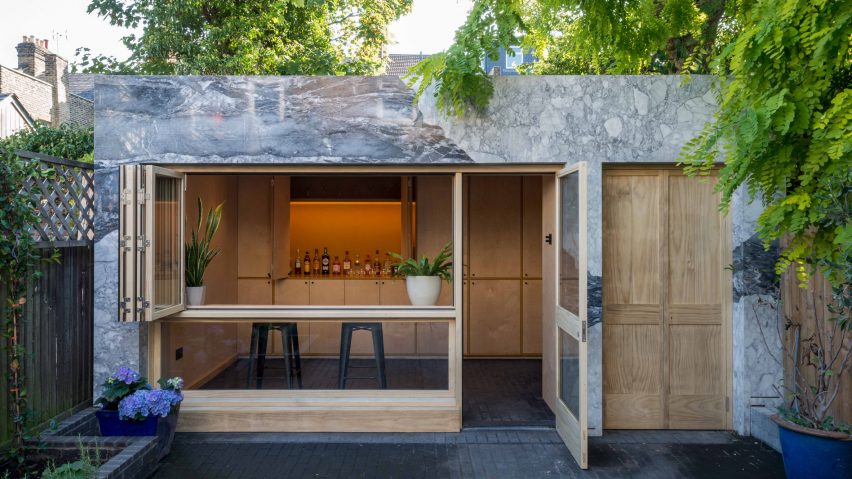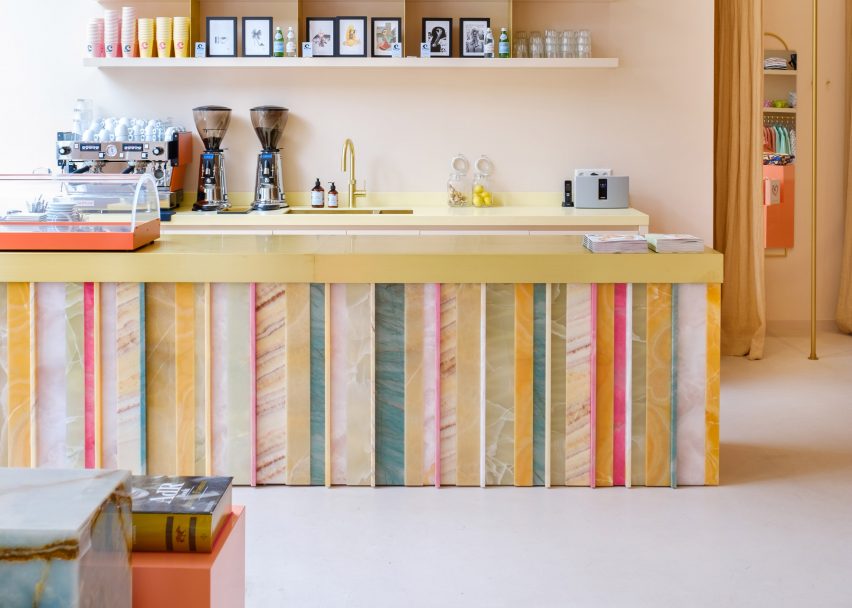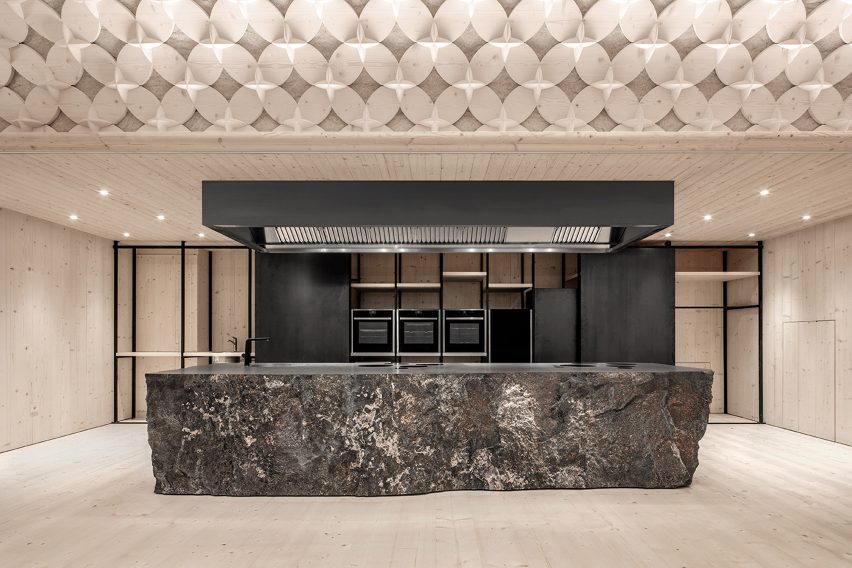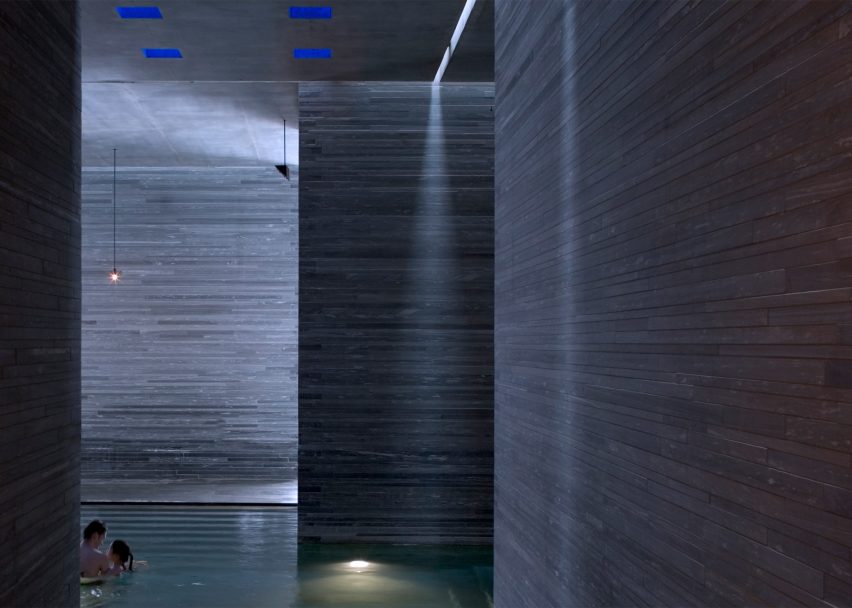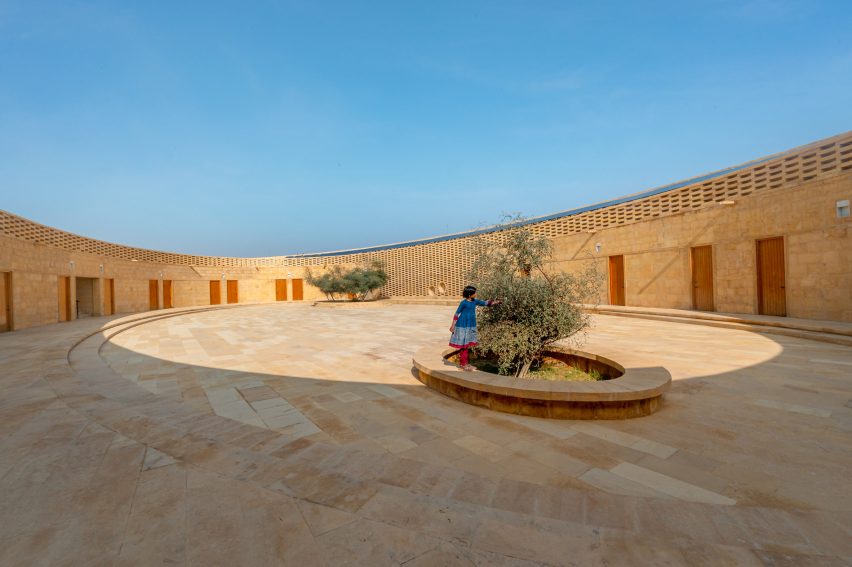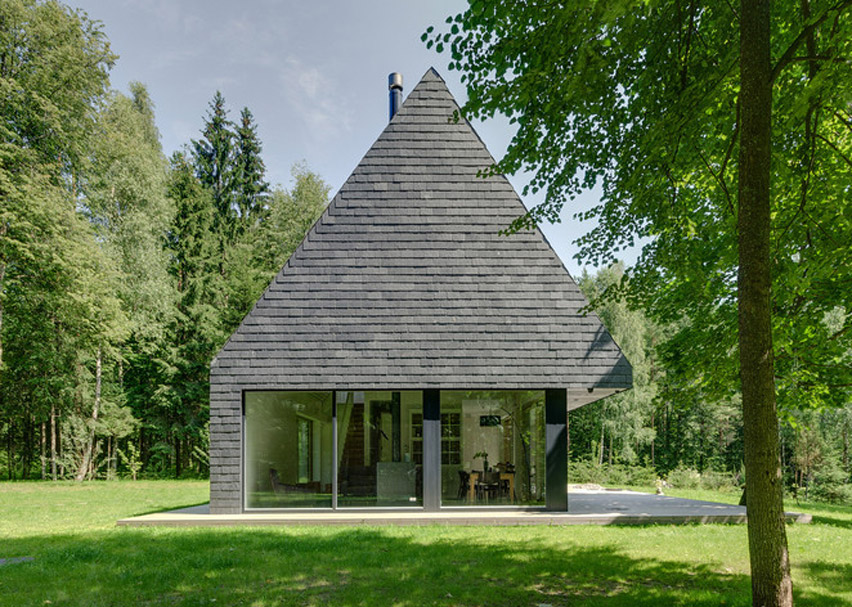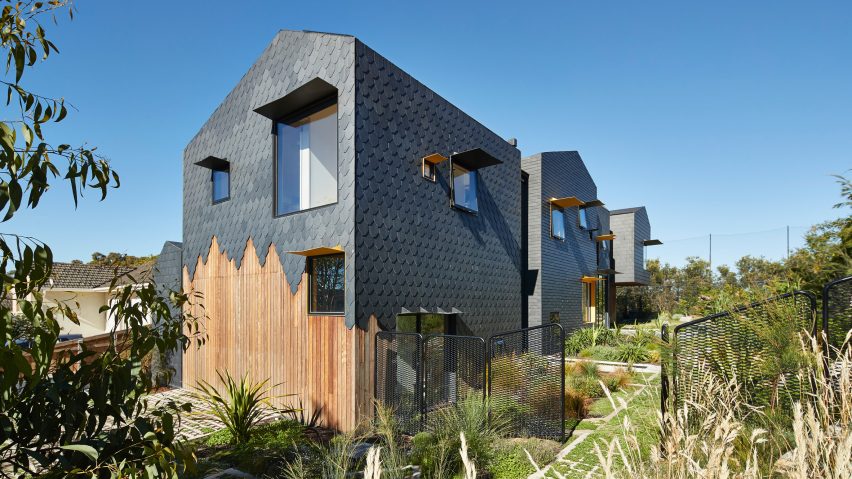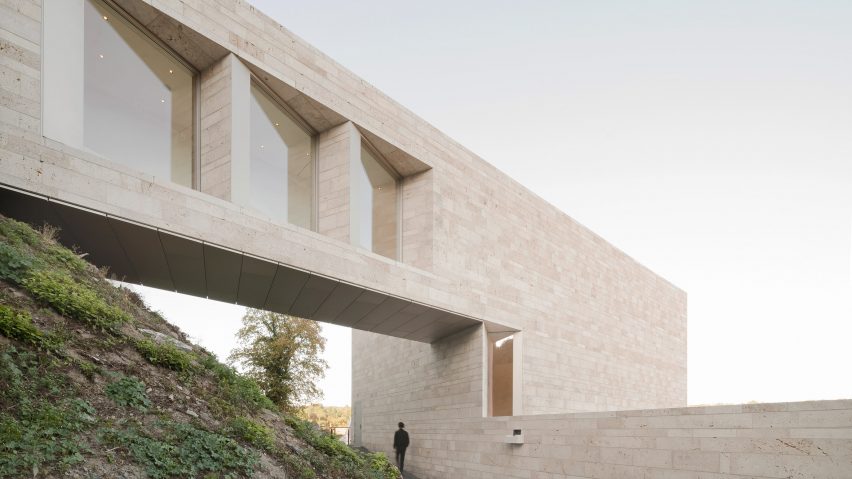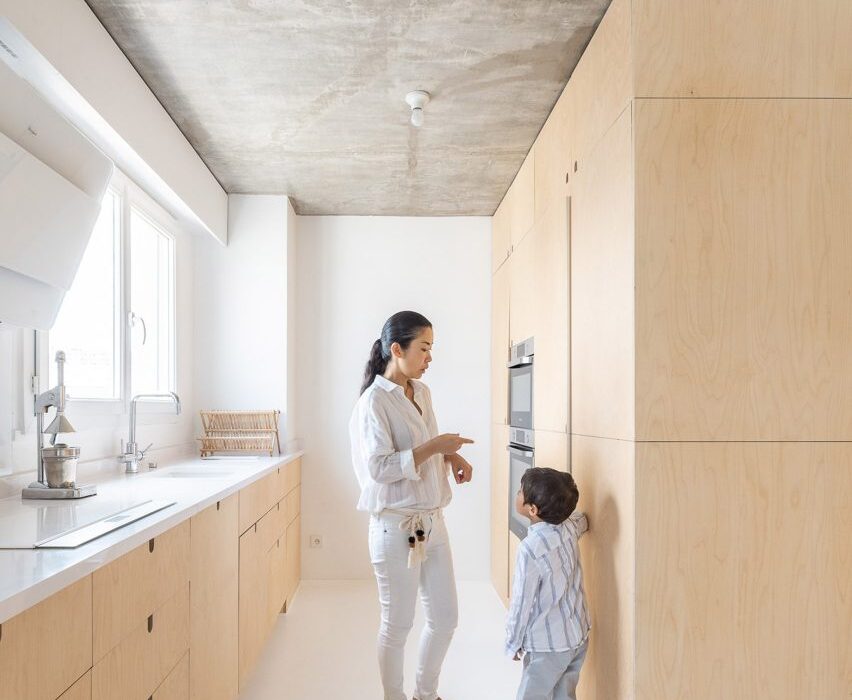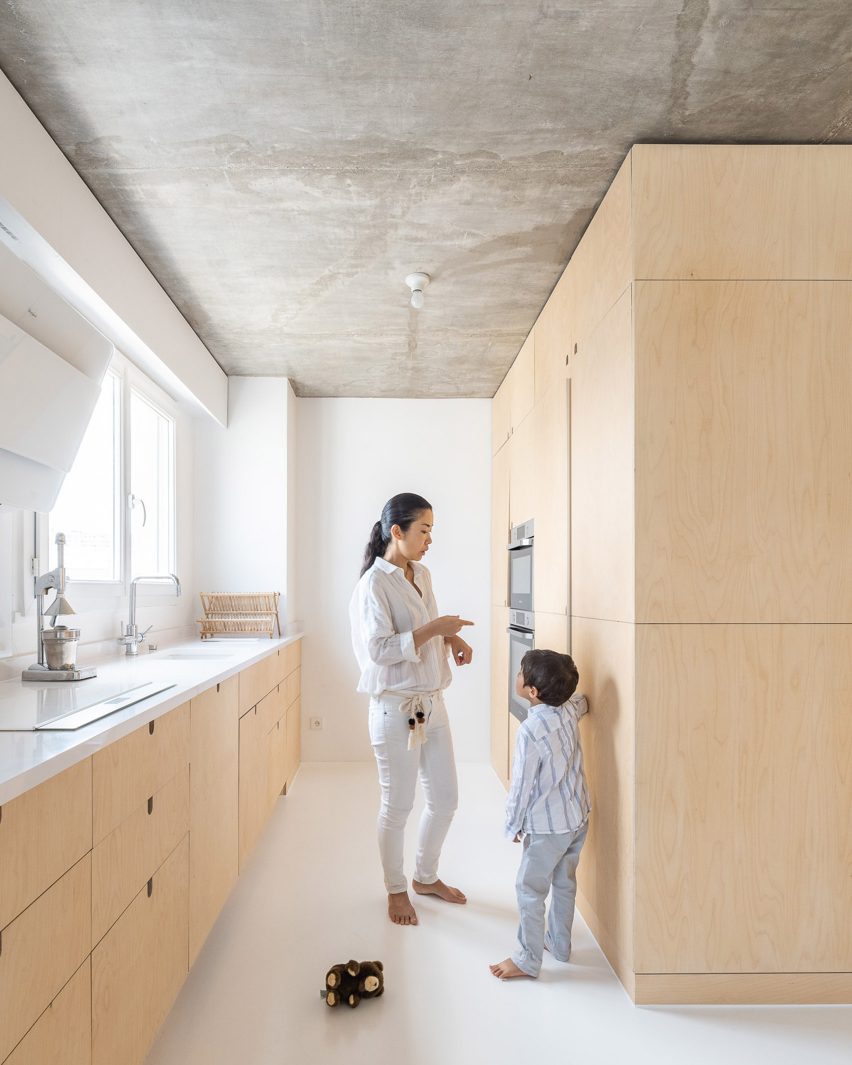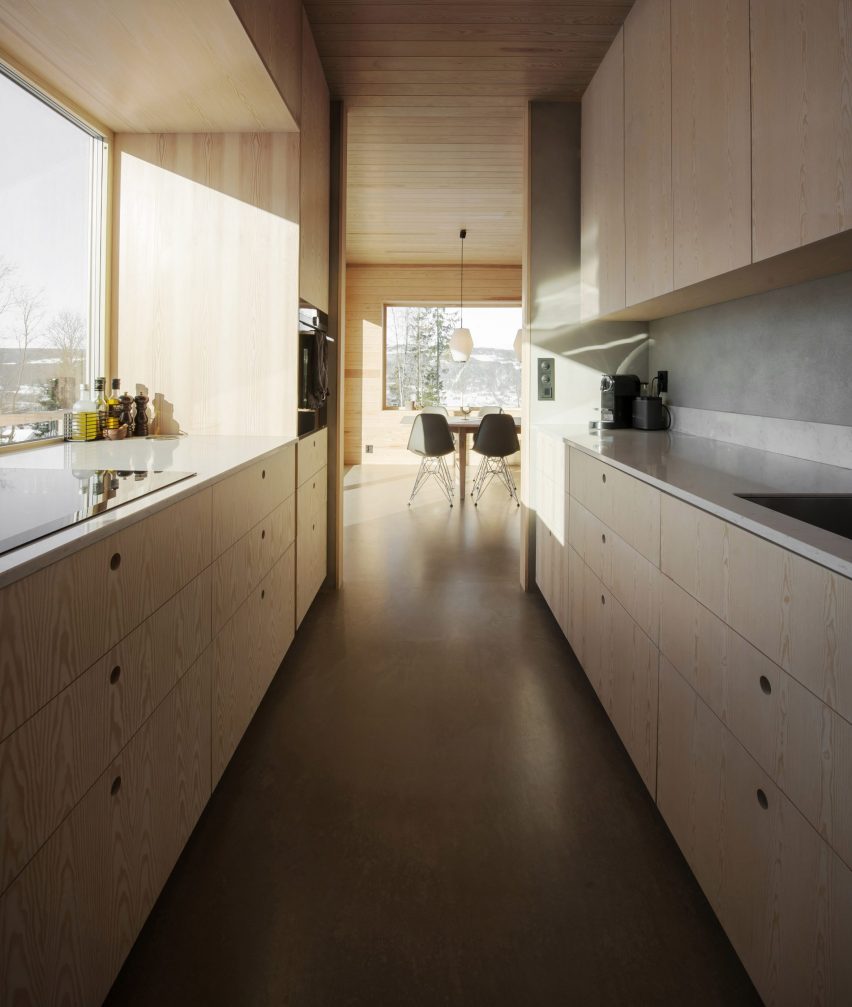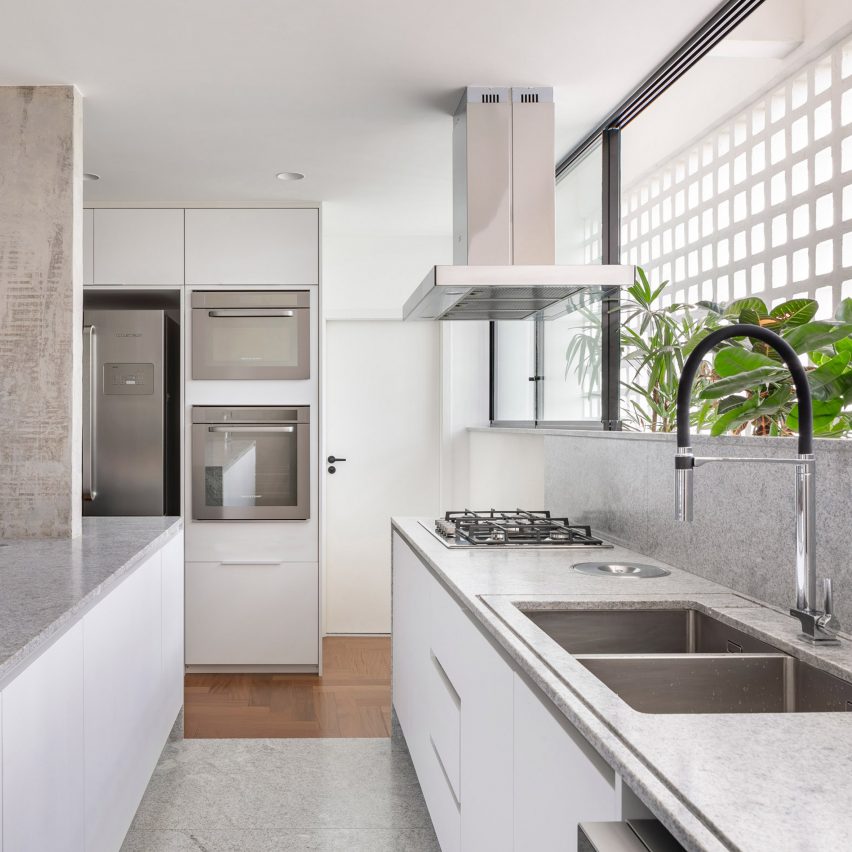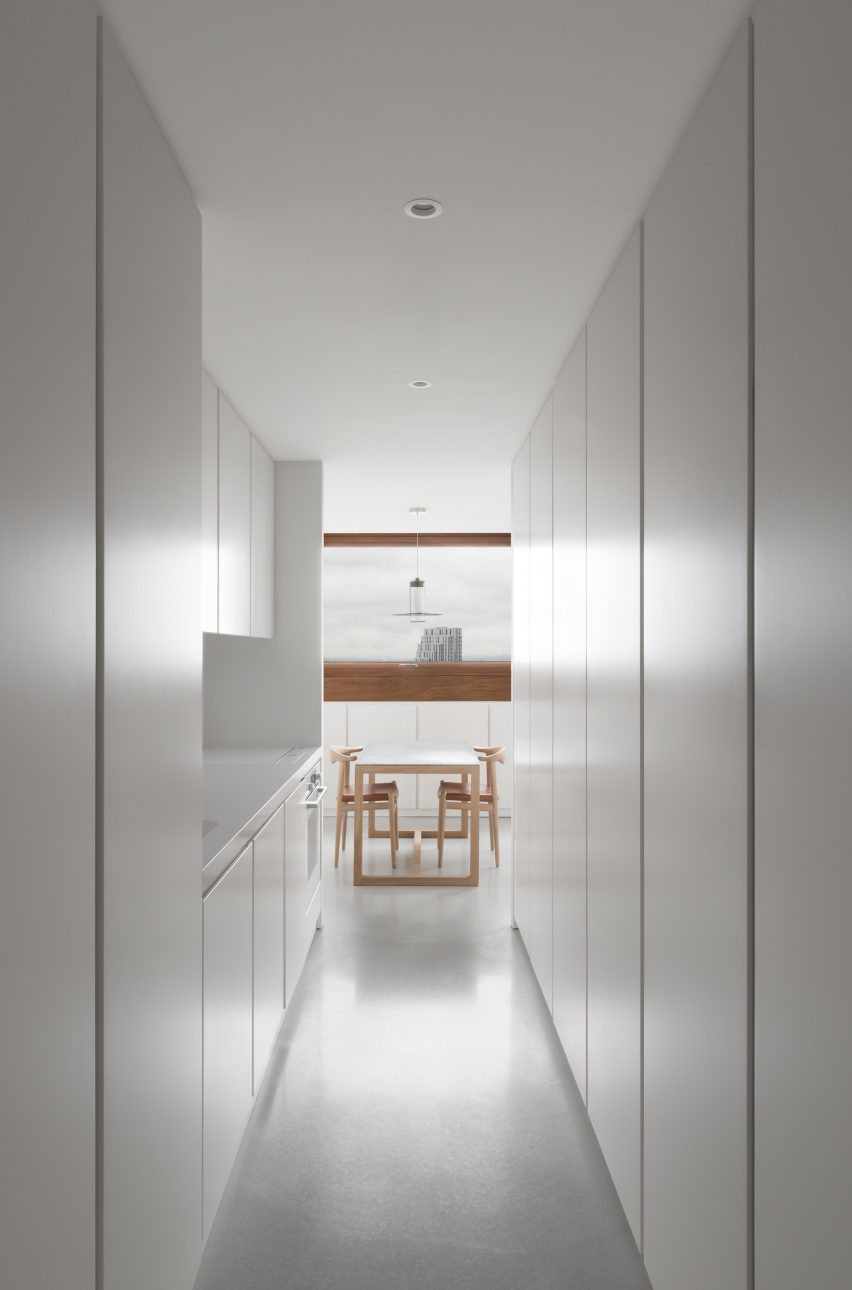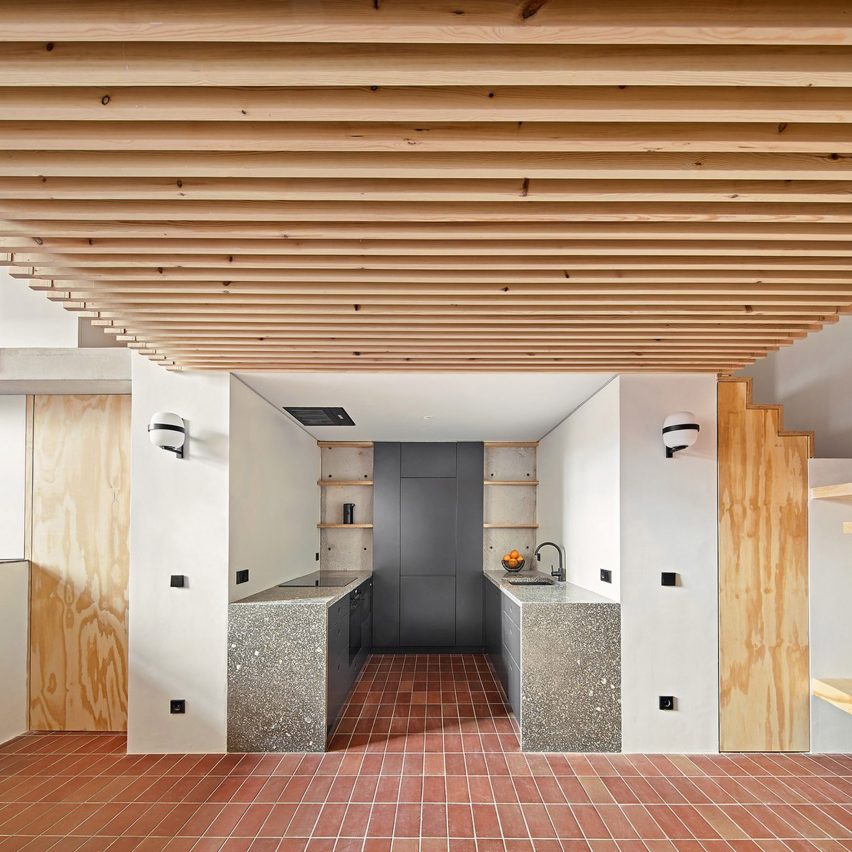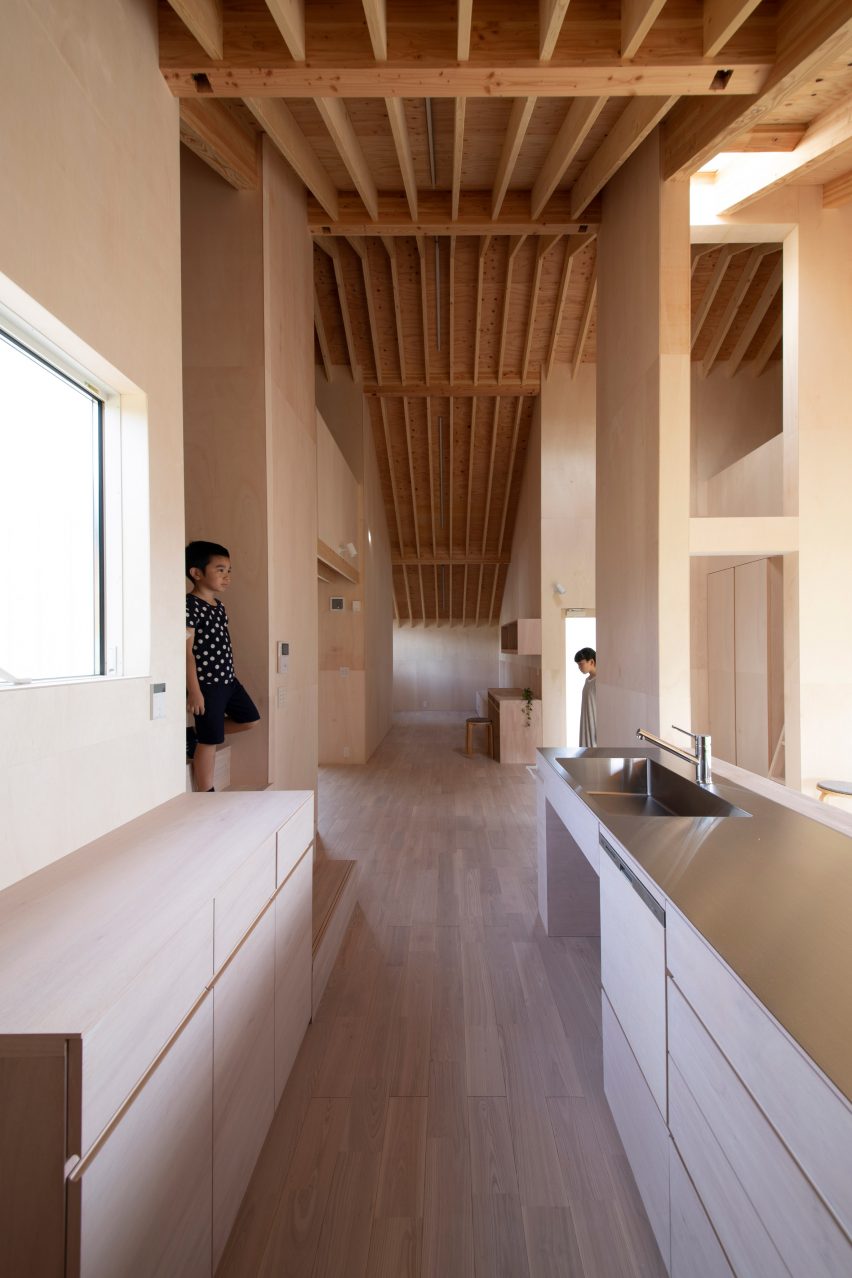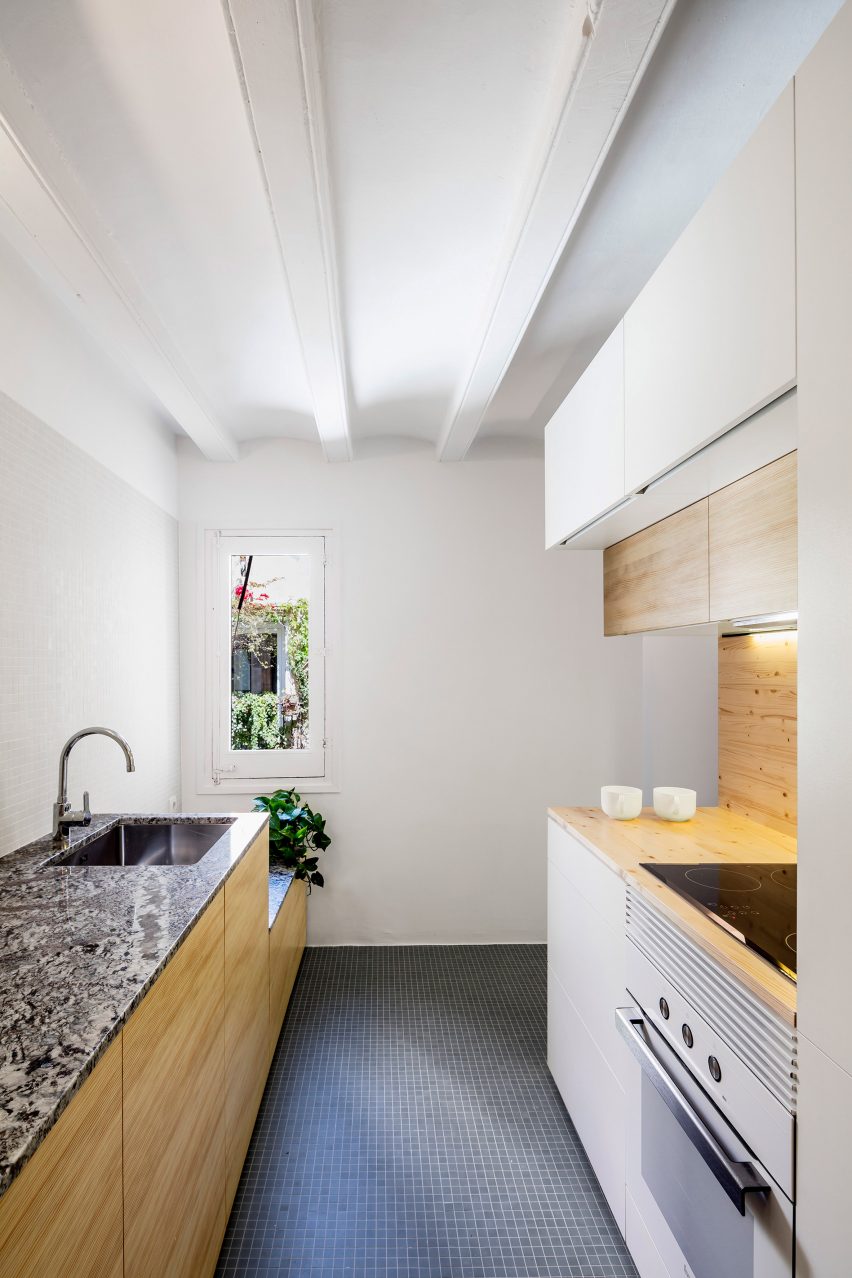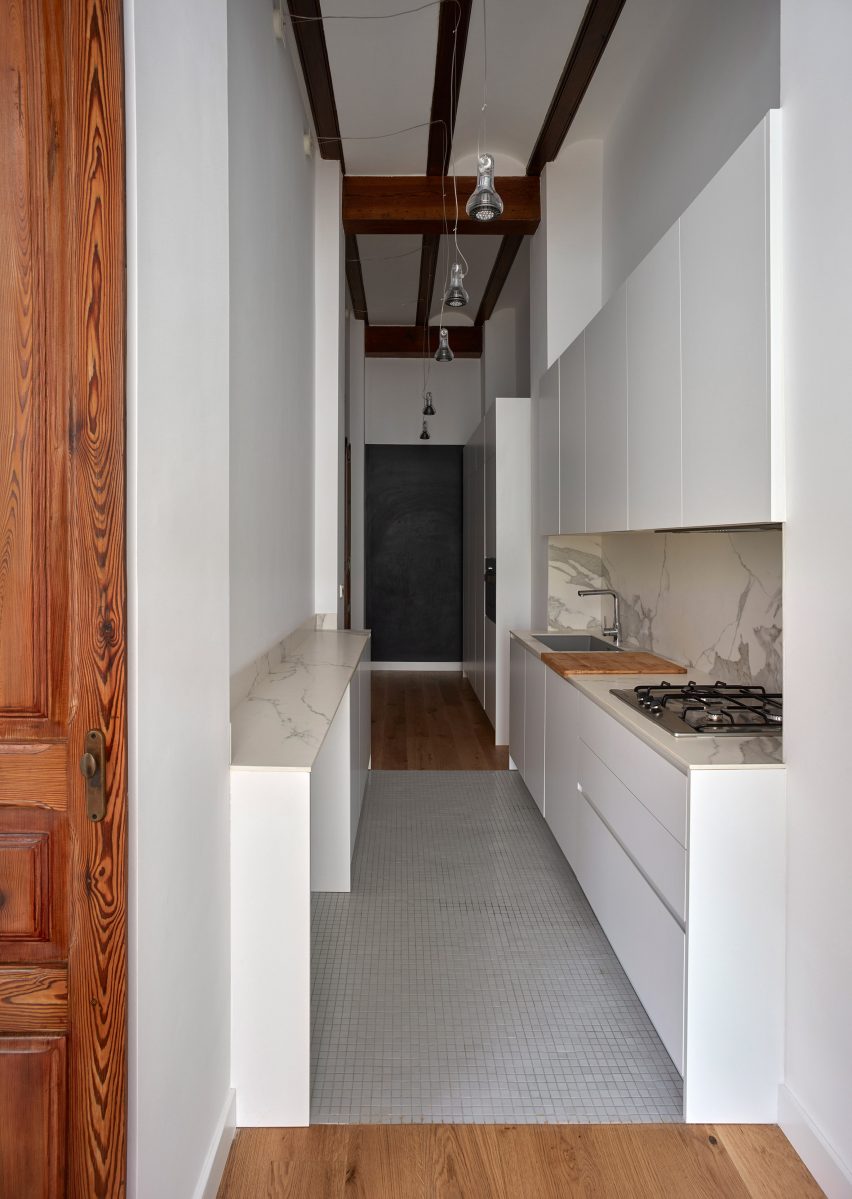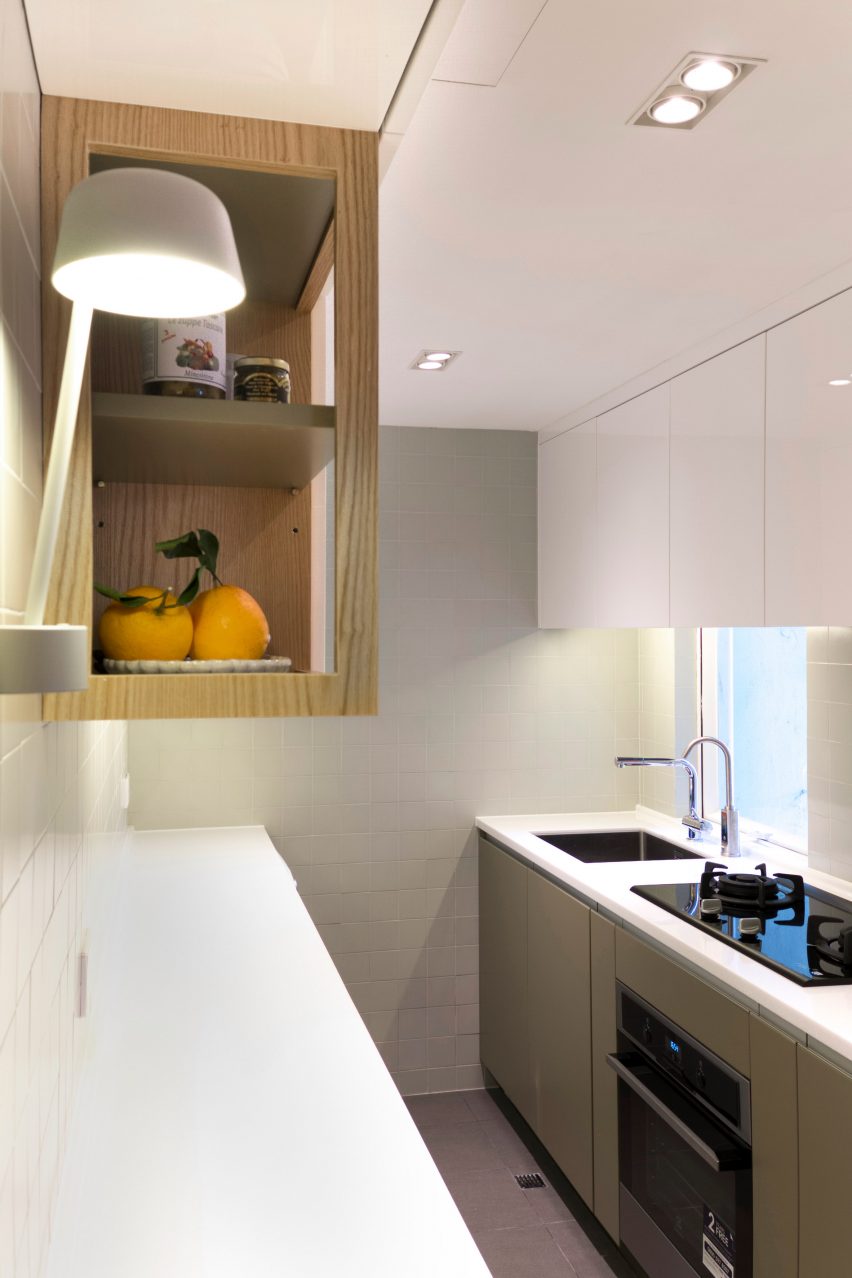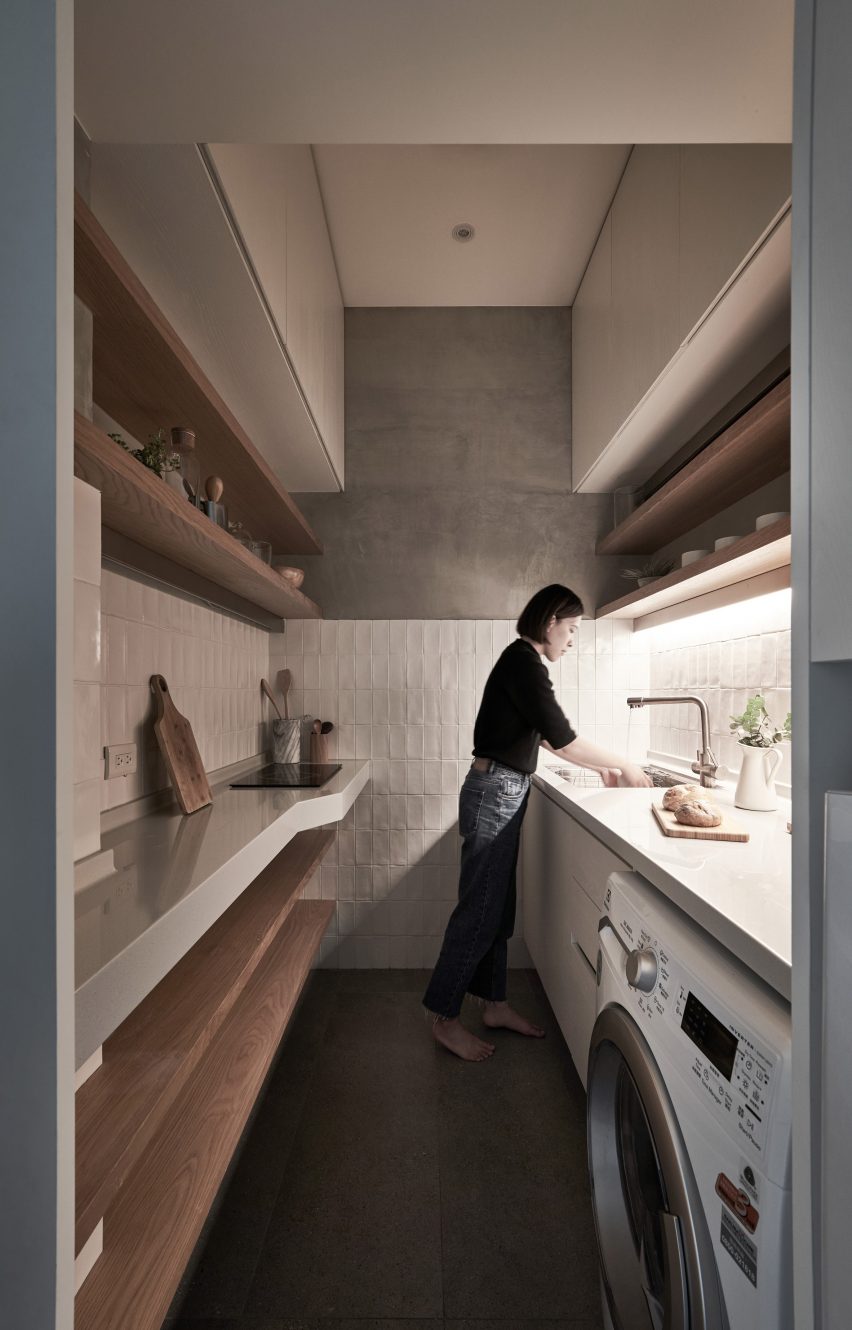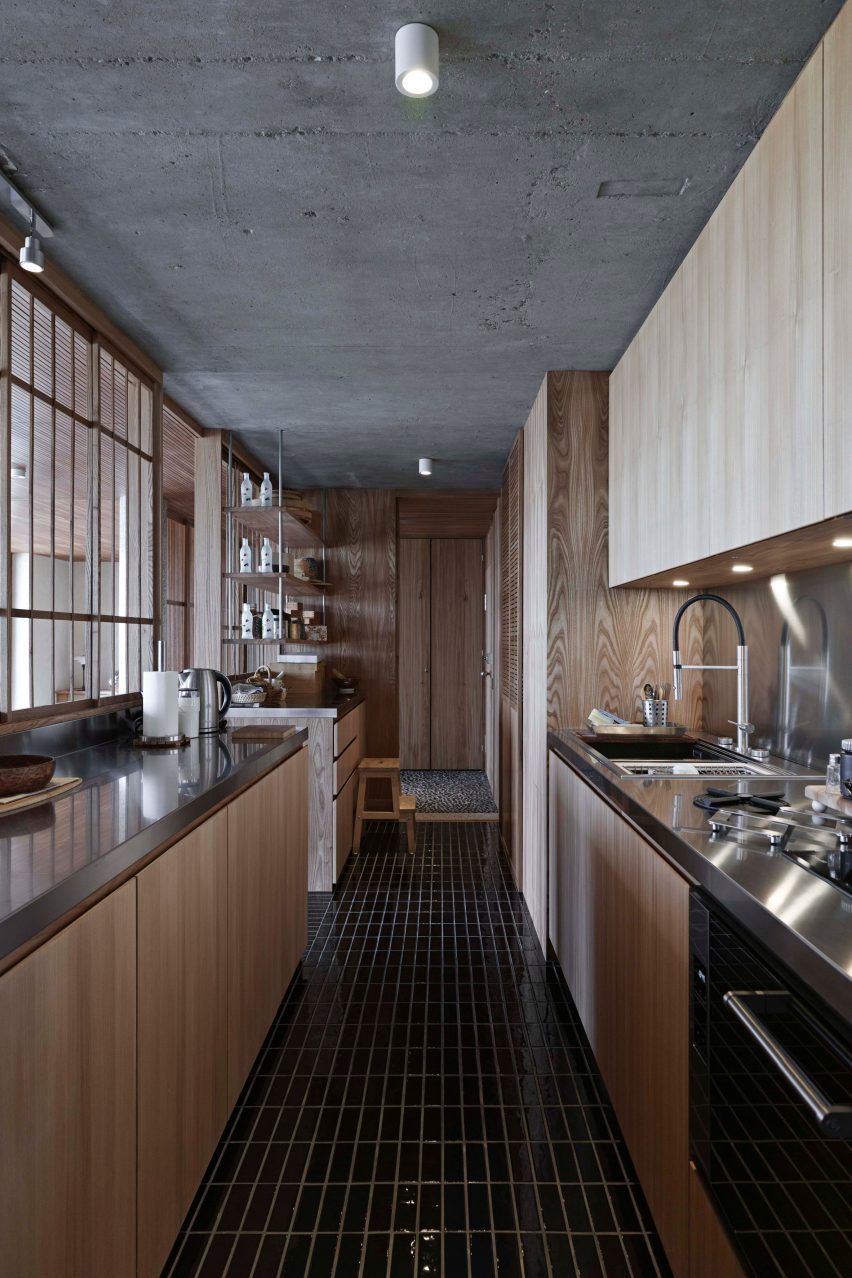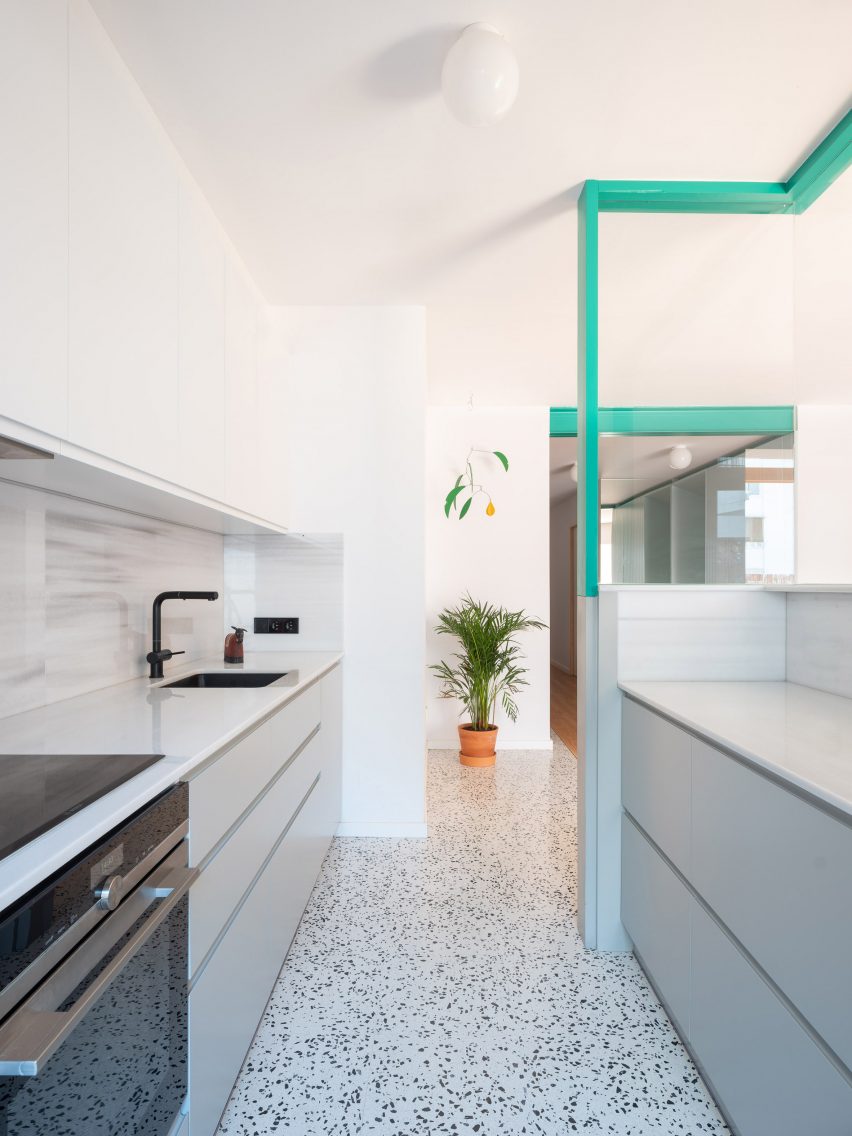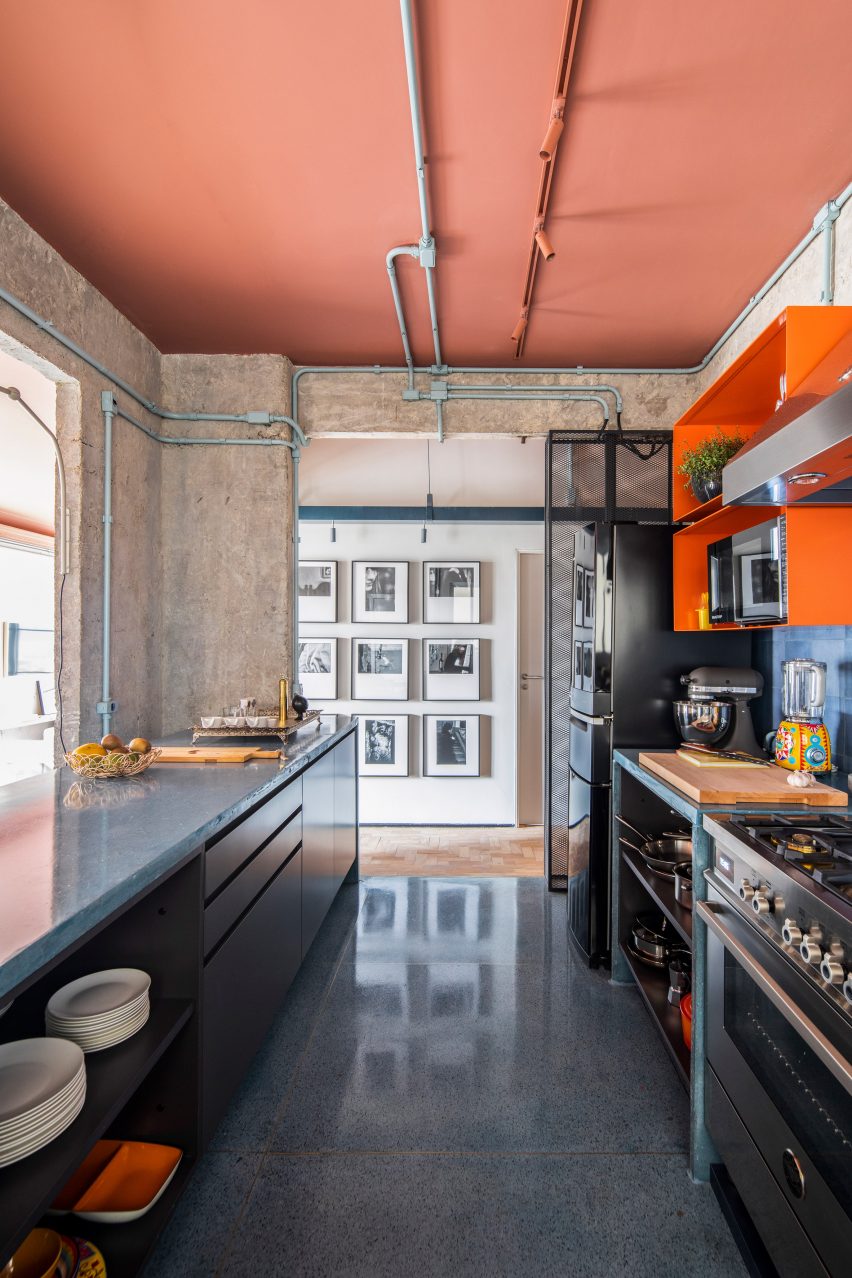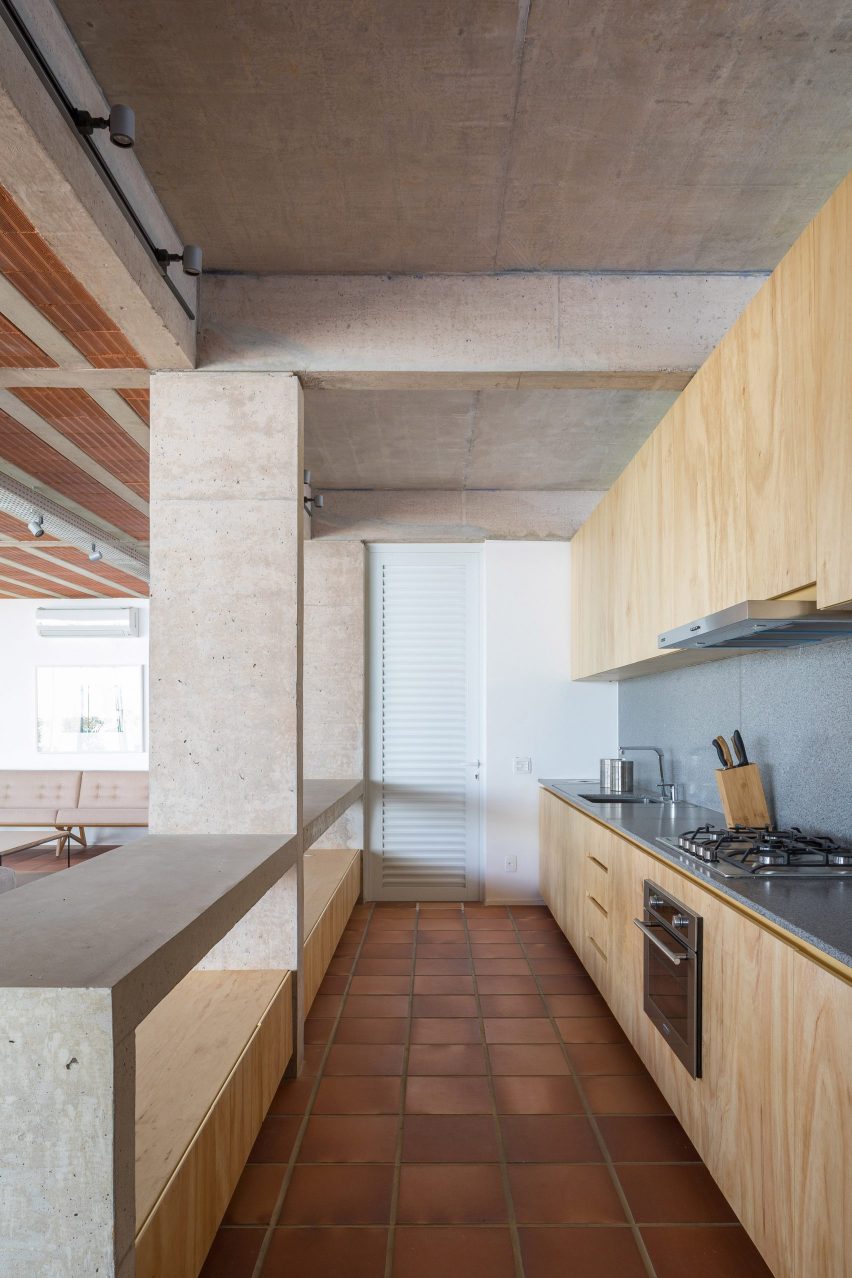Pratt Institute interior design students showcase end-of-year projects
Twenty interior design students at New York City’s Pratt Institute present their final projects in Dezeen’s latest school show.
From a building that could purify contaminated floodwater to analysing how to improve user’s airport experiences, these projects by undergraduate and postgraduate interior design students at Pratt Institute explore how interiors affect our environment and behaviour.
School: Pratt Institute
Courses: BFA Interior Design and MFA Interior Design
School statement:
“The Bachelor of Fine Arts and Master of Fine Arts in Interior Design at Pratt Institute has consistently ranked as the top interior design programmes in the United States and are considered to be some of the most prominent and influential. The courses prepare students to engage in critical inquiry and exploration – skills that establish them as innovators having an impact on the profession, the discipline and research on the interior environment.
“The programmes are architecturally oriented with emphasis on spatial articulation. They are designed to guide students in generating creative solutions by understanding craft, light, colour, and material research. Through theoretical and applied research, the curriculum addresses emerging and innovative technologies, interdisciplinary collaboration and sustainable practices. Both degrees focus on larger issues of ethical and social responsibility, diversity, equity, and inclusion through an understanding of global cultural history and its context.”
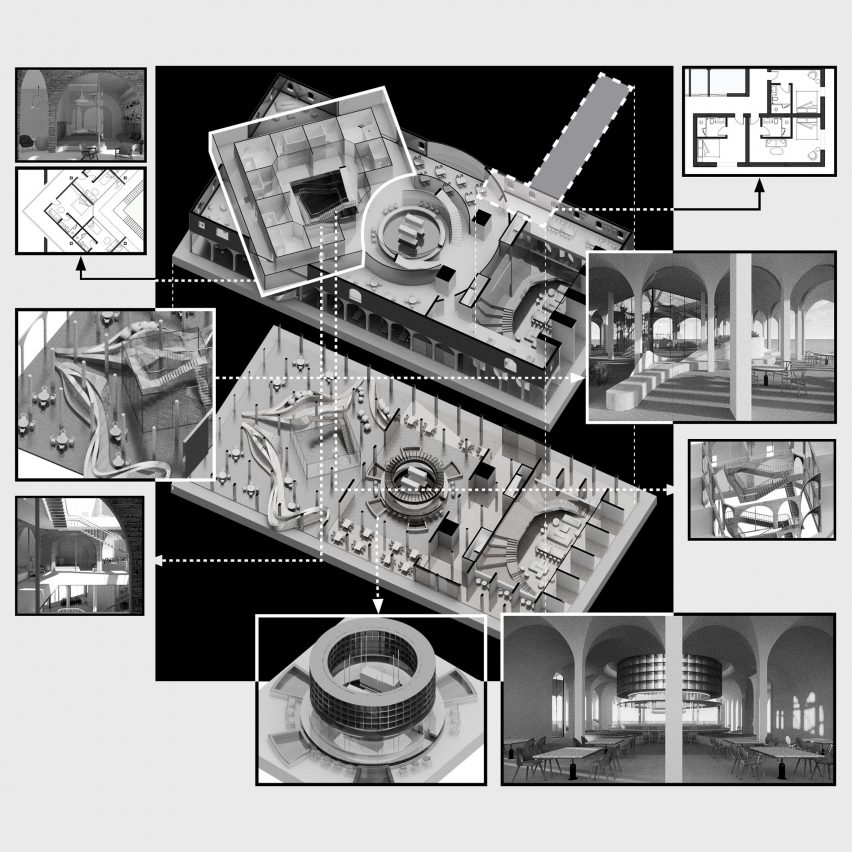
Solitary Living and Social Interactions in Urban Community by Bingyu Hu
“With different scales, functions and degrees of transparency, interior spaces serve as containers to protect privacy, stimulating communication and participation. As a result, they respond to individual’s lives while fostering community interaction.”
Student: Bingyu Hu
Advisor: Woody Rainey
Course: MFA Interior Design
Email: bhux16@pratt.edu
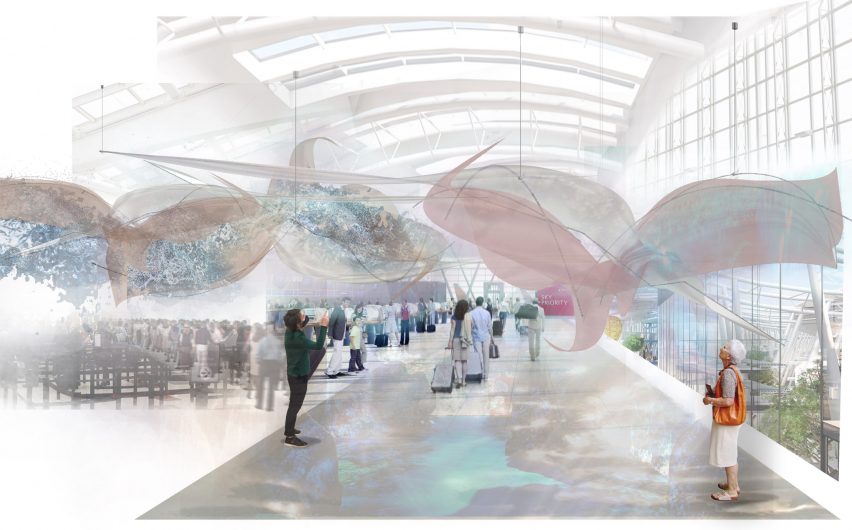
Activating Boundaries by Caitlin McMasters
“Activating Boundaries addresses the way generic airport experiences have become passive due to the overwhelming amount of stress placed on users throughout their journey. The effects of these emotions leave the user searching for entertainment from the consumerism offered post-security check.
“Based on research, the stress users undergo are elevated in periods of waiting and delays when the presence of large lines appear. Is there an opportunity to repurpose these boundaries? Can stressors be transformed into a sensory experience? How can we transition from the independent isolation of travelling to experience the journey of travelling together?
“This thesis allowed me to investigate the future of design amidst a global pandemic that has altered the way we perceive space and people. It investigates reconnecting people with each other.”
Student: Caitlin McMasters
Advisor: Dalia Hamati
Course: BFA Interior Design
Email: cmcmaste@pratt.edu
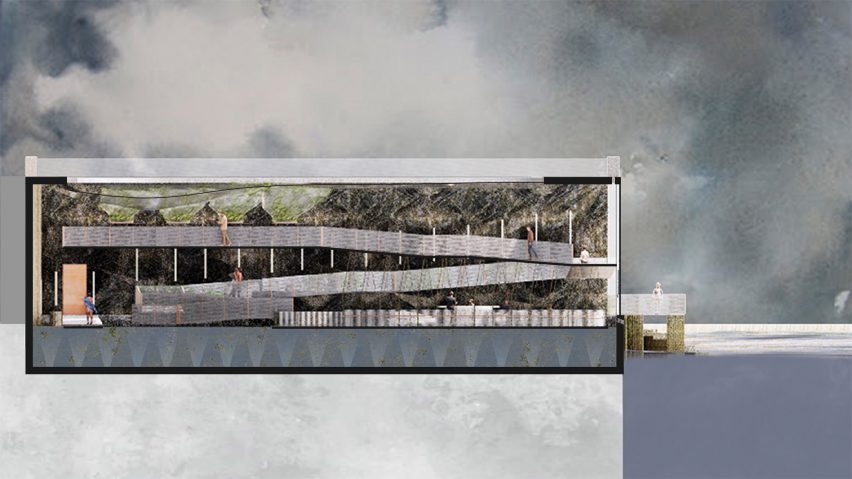
Harvesting Water: Reimagining Environmental Waters as Constructive Materials in the Resilient Coastal Interior by Kats Tamanaha
“By 2060, an estimated 13 million Americans will be displaced due to rising sea levels and coastal flooding. This thesis explores the possibilities of tidal, flood and stormwater as ‘materials’ in our built environment. Here their potential is shifted, from substances that destroy to resilient tools used to manage flooding.
“Water within the built environment is hidden, hyper-controlled through intricate plumbing systems and filtered for use. Water within the exterior is uncontrolled and often feared. Floodwater is contaminated, picking up traces of where it has been and what it has touched. As sea levels rise, areas formerly at risk for 100-year floods will soon be submerged at high tide. How can the interior adapt to embrace the new reality of water rather than avoid it?
“My project embraces the future of permanent tidal flooding. The building passively phytoremediates toxic water while creating an adaptive form of the interior. It explores possibilities of tidal, flood, and stormwater as tools for long-term, in-place resiliency in coastal communities facing an increasing risk of flooding.”
Student: Kats Tamanaha
Advisor: Irina Schneid
Course: MFA Interior Design
Email: ktamanah@pratt.edu
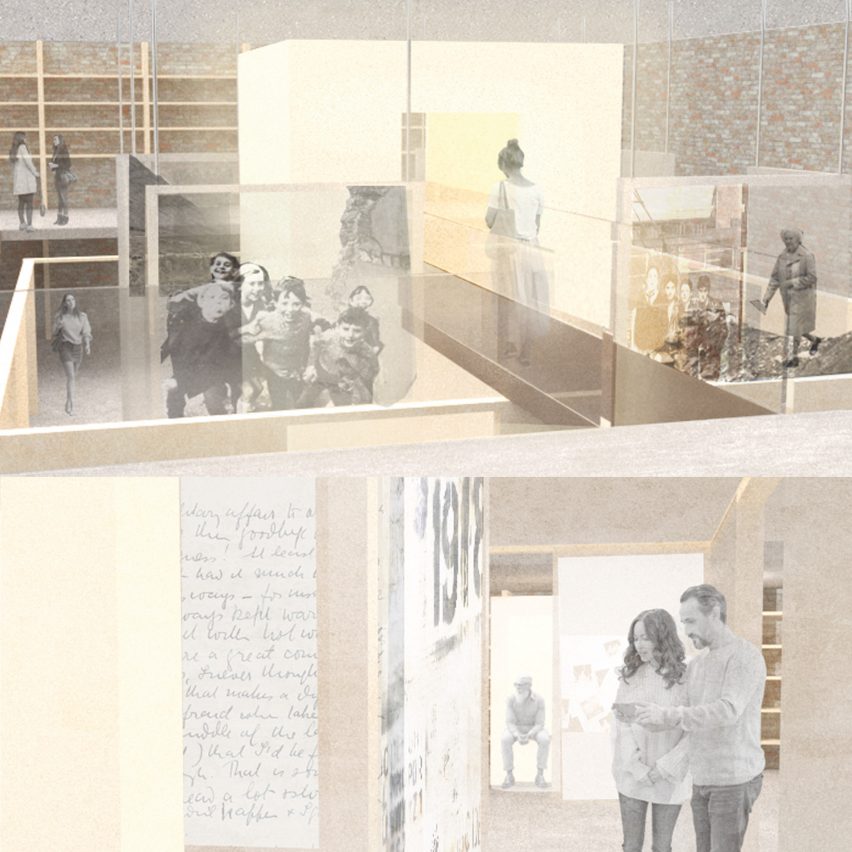
Fragment / Reconcile by Aoife McCaul
“Fragment / Reconcile addresses the complexity of living in a post-conflict, economically deprived community that struggles under the burden of the past. Following the events of the troubles and the death of a dominant industry, an entire generation is coming of age in Derry who have to navigate insurmountable unemployment rates and forge a path to peace with little to no outside support.
“To help mitigate the most pressing issue for youth in Derry, I proposed an incubator and teaching facility to build community resilience through a network of small businesses. The centre would provide the resources currently lacking to retain their workforce and make upward mobility possible within the city.
“Growth is made possible by the incubator’s interactive and reflective practices. It engages with the community on a macro scale while also encouraging individual healing on a micro scale. As the user moves through space, it transitions from a collaborative environment to a self-reflective one. An archive becomes the basis upon which to preserve and reflect the collective memory of the people it serves. By being informed by the past, they can move towards the best version of their future.”
Student: Aoife McCaul
Advisor: Melissa Cicetti
Course: BFA Interior Design
Email: amccaul@pratt.edu
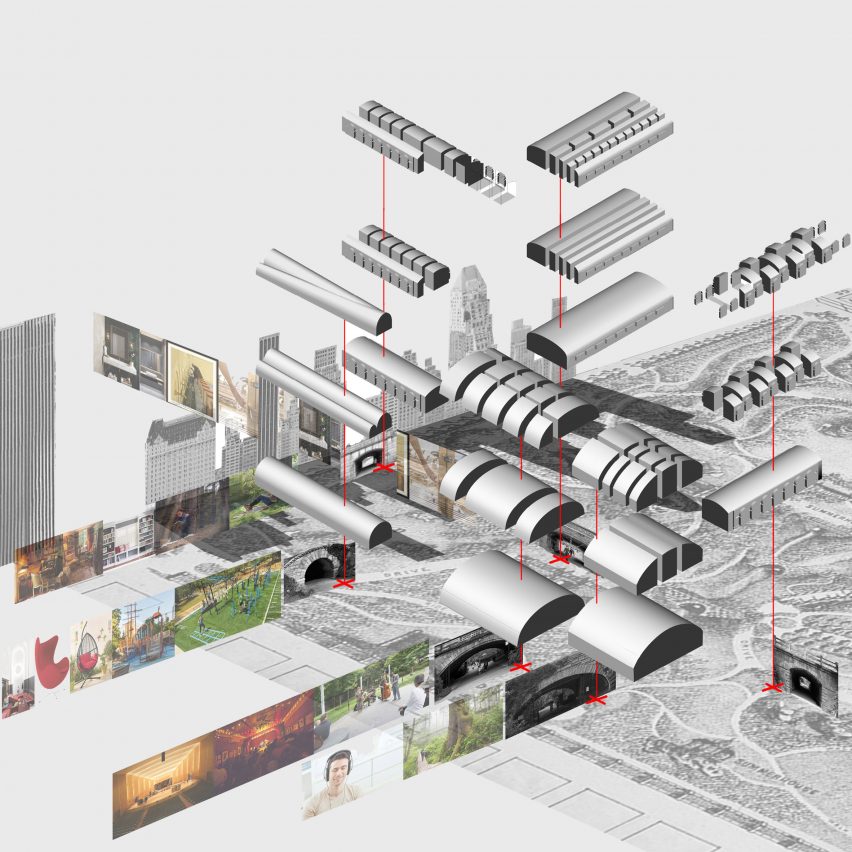
Inhabiting In-between Space by Tao Sun
“This project puts forward new ways to inhabit in-between space. By breaking down interior elements one by one, a layering of interior and exterior space emerges and reinvents traditional spatial constructs.”
Student: Tao Sun
Advisor: Edwin Zawadzki
Course: MFA Interior Design
Email: tsun4@pratt.edu
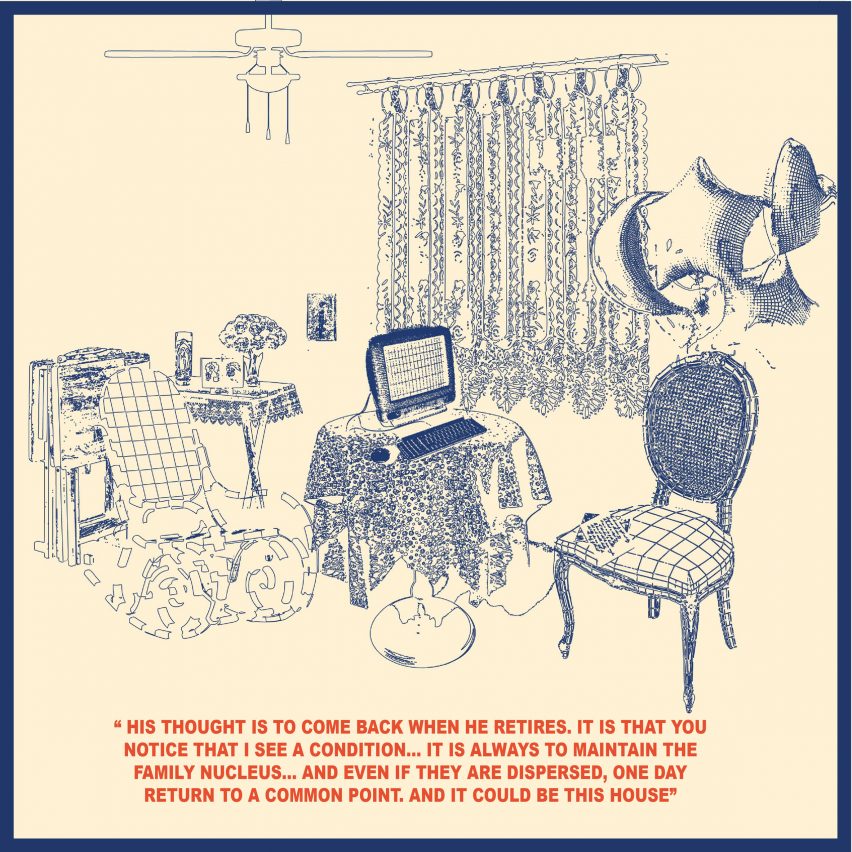
“We Learn Culture At Home” by Bridget Rodezno
“This thesis focuses on the home as a ‘central agent of change’ in response to the remittance between the Salvadoran-American transnational identity. Here, remittance signifies the value of a cultural currency by forming a multi-generational landscape of retraced rituals and reassembled emblems.
“At the beginnings of a discourse, there is an agency in how the home responds to generational, cultural, psychological and environmental issues to constantly shape, design and re-examine contemporary living.”
Student: Bridget Rodezno
Advisor: John Nafziger
Course: BFA Interior Design
Email: brodezn5@prattt.edu
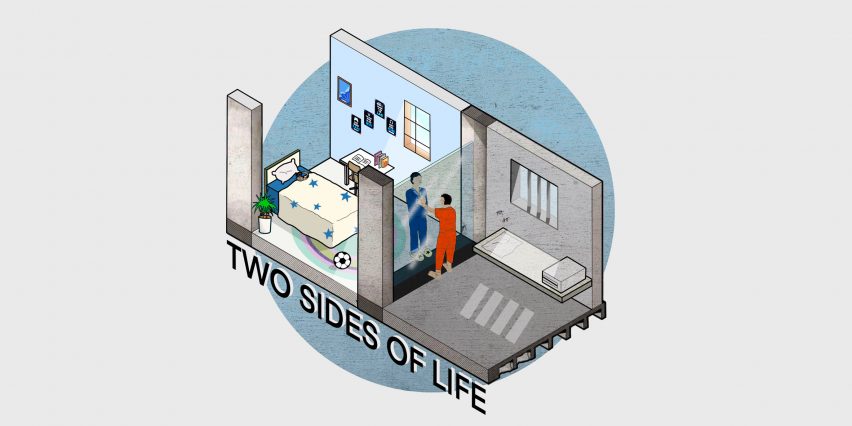
“The Nest is a didactic and prototypical full-time detention centre designed for male adolescents who have committed minor crimes. It is a critique of the current antiquated prison form in New York City. It explores educational, healing, and therapeutic spatial relationships and rethinks surveillance in order to reform negative behaviours and support mental health issues.”
Student: Chaowei Wang
Advisor: Alison Snyder
Course: MFA Interior Design
Email: cwang31@pratt.edu
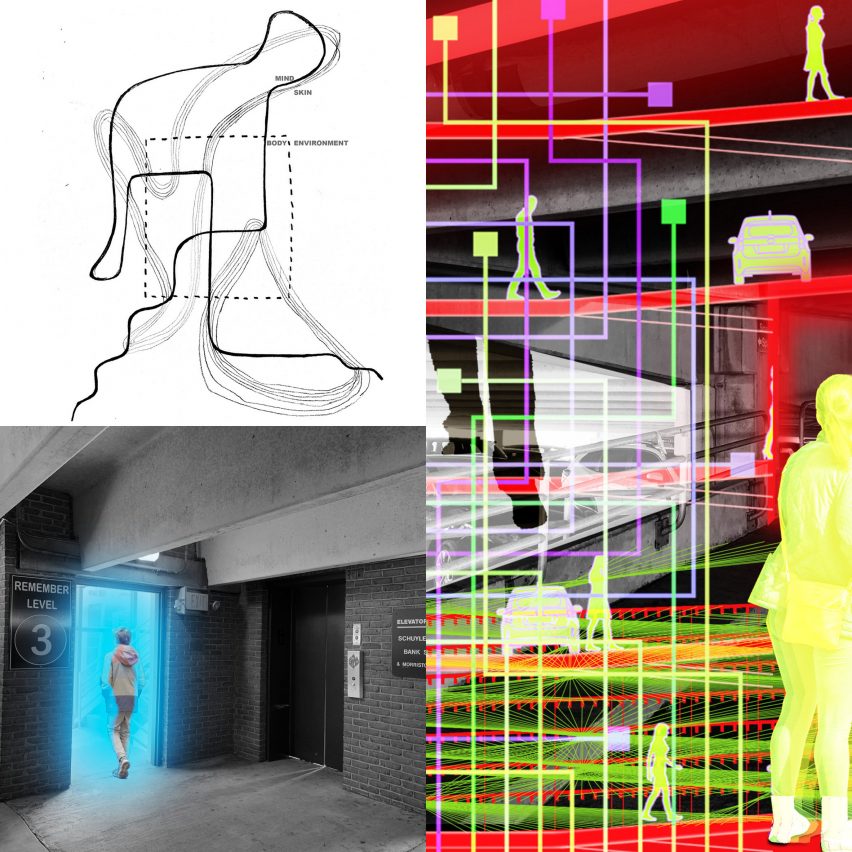
Moments of Movement by Kelli McGrath
“Moments of Movement investigates how interior space can directly affect one’s bodily awareness and interactions with the environment. Rather than habitually moving through space, space can be designed to heighten our awareness of our body and its relationship with the material world.
“The intention is to bring more awareness and appreciation to those small, everyday events that we often perform on auto-pilot. Although we tend to seek out spectacular events, life often happens in those everyday moments in-between. Rather than rushing past them, the users are prompted to slow down and experience those moments.
“The thesis proposes that the body will be part of a network where interactions and movements through thresholds directly affect the environment. By augmenting thresholds within a parking garage and adding screens, mirrors, enhanced lighting, walls and monitors, body movements will be figured as the form-making material of the project. As the body moves within and between various garage zones, it becomes part of a network and explores the relationship between the environment and agency.”
Student: Kelli McGrath
Professor: Brendan Moran
Advisor: BFA Interior Design
Email: kellimcgrath0817@gmail.com

Building Within Memory: Strengthening Place Identity in Deteriorating Environments by Claire Riordan
“Place-identity is defined by a person’s cognitions about the physical world around them. At their core are a person’s environmental past, made up of places, spaces and characteristics that have shaped their biological, psychological, social, and cultural needs.
“This thesis analyzes how the changing built environment can be used as a tool to reveal layers of place-identity. The mutual experience of change over time will inform the connection between the physical body and the spatial body, resulting in a stronger sense of self-identity.”
Student: Claire Riordan
Advisor: Francine Monaco
Course: MFA Interior Design
Email: criorda3@pratt.edu
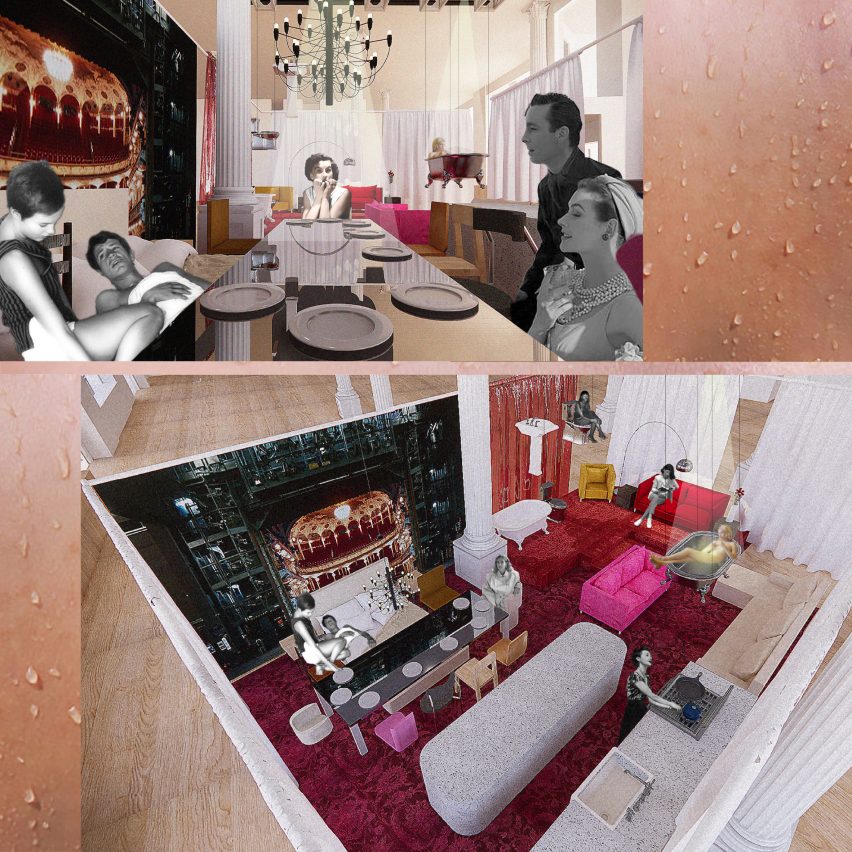
Stage Fright by Allison Margret Piccone
“Through the theory that performance exists every day, stage fright occurs in domestic, banal settings. In this project, customers in a retail furniture store become performers during their perusal of the staged vignettes by subverting social thresholds and design standards, new social and physical relationships form, alleviating the stigma of stage fright.
“Set in the theatrical and historical furniture showroom – ABC Carpet and Home – the staged sets which aim to present a home setting are critiqued as performative. Hired performers act out different domestic activities and shoppers find themselves crossing the threshold from audience to performer. In their attempt to look at the furniture, test it and imagine it in their own homes, they become part of the performance.
“An open floor plan allows for programmes to cross over, as a bed becomes a seat in a dining setting. Some toilets are for show, while others have working plumbing. The sets have spotlights, curtains and a fly system that allows for changing scenes, as furniture flies overhead, adding a theatrical quality to the performance.”
Student: Alison Margret Piccone
Advisor: Alex Schweder
Course: BFA Interior Design
Email: allisonpiccone@gmail.com
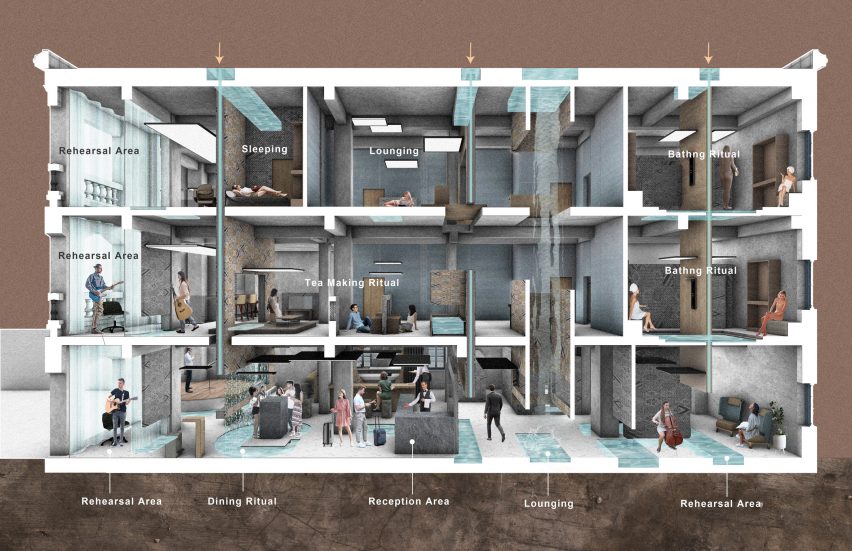
House of Harmony by Huangyu Zhang
“This thesis explores a shared harmonic environment for residents and tourists. It uses performance rituals to create a prototypical system for cultural interaction and social harmony in creative cities of music evaluated by UNESCO.
“Spatial devices create new relationships between tourists and residents, combining with daily events such as dining or lounging, and cultivating cross-cultural understanding through the universal language of music and integrating it into the celebration of rituals such as holidays and food.
“The rituals will create a specific spatial quality by increasing culture experiences by controlling the sound transparency and visualizing the vibration of sound.”
Student: Huangya Zhang
Advisor: Nina Freedman
Course: MFA Interior Design
Email: zhanghuangyu1@gmail.com
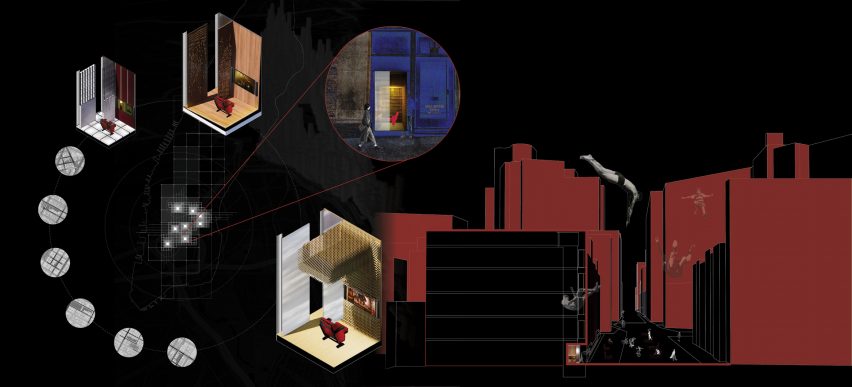
Curating Urban Wormholes by Rianna Desai
“Curating Urban Wormholes explores the city through a new lens: by inserting cinematic experiences in sidewalk freight elevators that connect invisible, disparate moments in the cityscape. The elevators function as portals to parallel universes providing a social and cultural exchange between program and user.
“The project was inspired by the loss of authentic cinematic experiences due to the pandemic and the heterotopic quality of underutilized niches in the city.
“The network of temporary cinematic installations in sidewalk freight elevators reengages the city by activating unused, ‘other’ spaces, unlocking the city’s true potential. The curated serendipity of the wormholes invites the rediscovery of the urban landscape.
“These wormholes have a nodular quality that gives them an existence of their past the time of their installation, allowing them to leave behind traces in the urban fabric that add to the layered experience of the city.”
Student: Rianna Desai
Advisor: Karin Tehve
Course: BFA Interior Design
Email: riannadesai1998@gmail.com
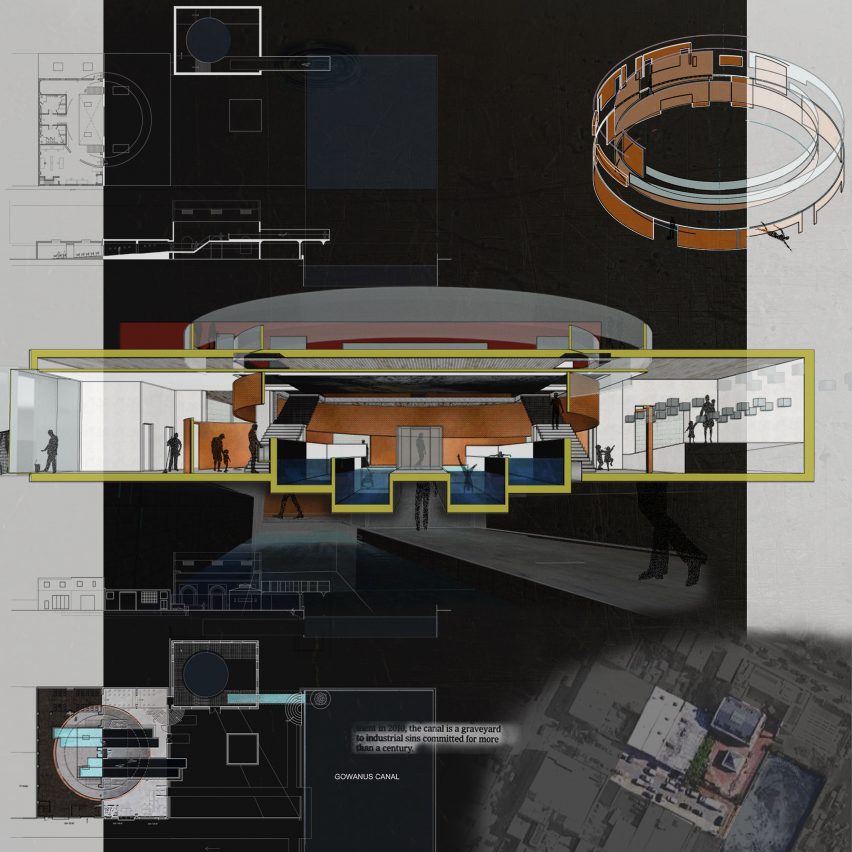
Beneath the Surface: An Inquiry into Boundary as a Didactic Threshold to Promote Awareness by Nella Gray
“Beneath the Surface explores ways to create tension within layers of interior design to provoke awareness and empathy for evasive issues.
“This project questions the separation of people from systems of production and waste as it enables apathy towards the concealed relationship of consumption and environmental degradation.”
Student: Nella Gray
Advisor: Claudia Hernandez
Course: MFA Interior Design
Email: nschools@pratt.edu
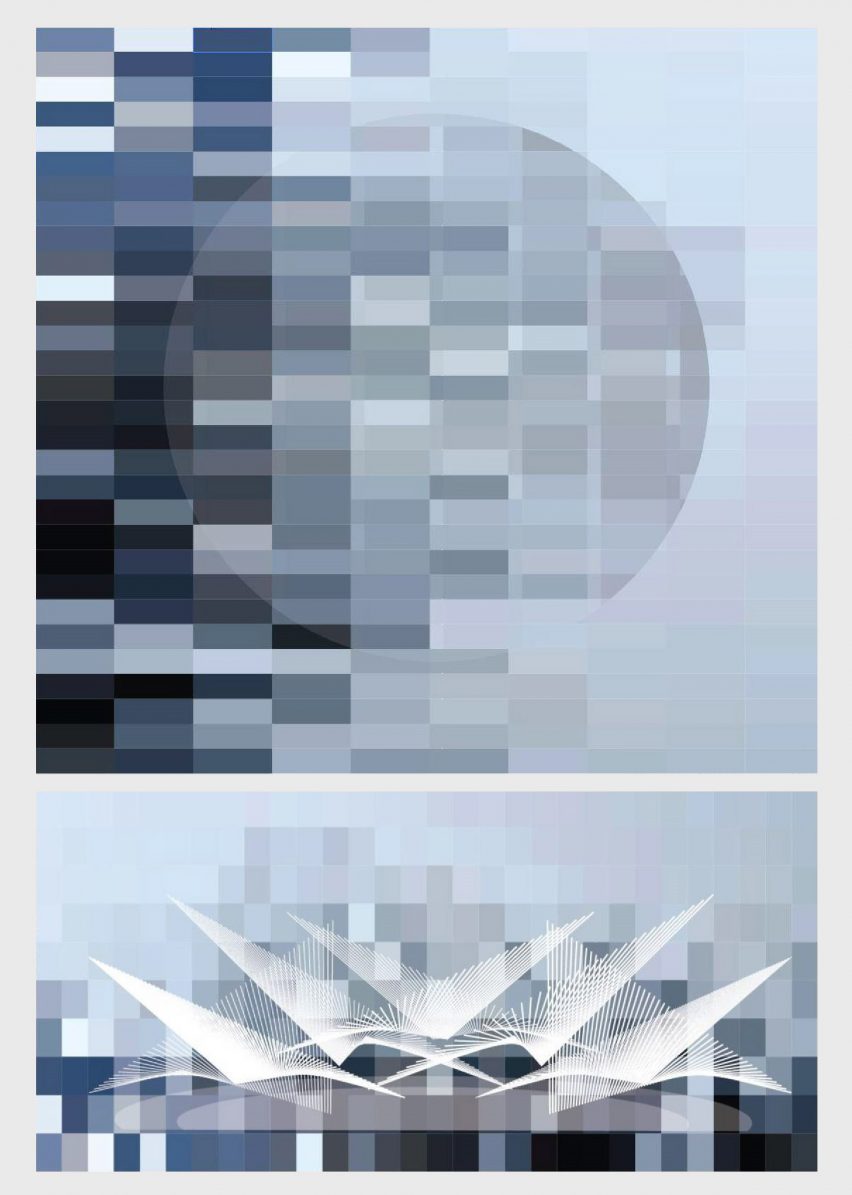
Sonic Parallax: Sensory Velocity by Nil Karaer
“Borrowing existing materials inherent to the New York City subway station, such as the 3×6 tiles, the project will manipulate the surfaces of the City Hall Station to become an interactive, acoustical field of sonic densities. This experiential-interactive installation intends to address the notion of speed by making the acoustic field and the different paces of the city visual. In other words, rendering auditory data points visible to understand the functioning of NYC.
“The exploration is towards creating an interactive instrument activated through the movement of the users and the train in relation to the parallax effect.
“City Hall Station is underneath the City Hall Park, and the entrance is through the park. It is a loop station for Train Six: The station has existing skylights to the park’s surface.
“The project will be taking a material inherent to the subway station and recreate exposed surfaces in a different function, colour, and densities of tiles to highlight the notion of speed which could be experienced visually and acoustically.”
Student: Nil Karaer
Advisor: Annie Kwon
Course: BFA Interior Design
Email: nkaraer@pratt.edu
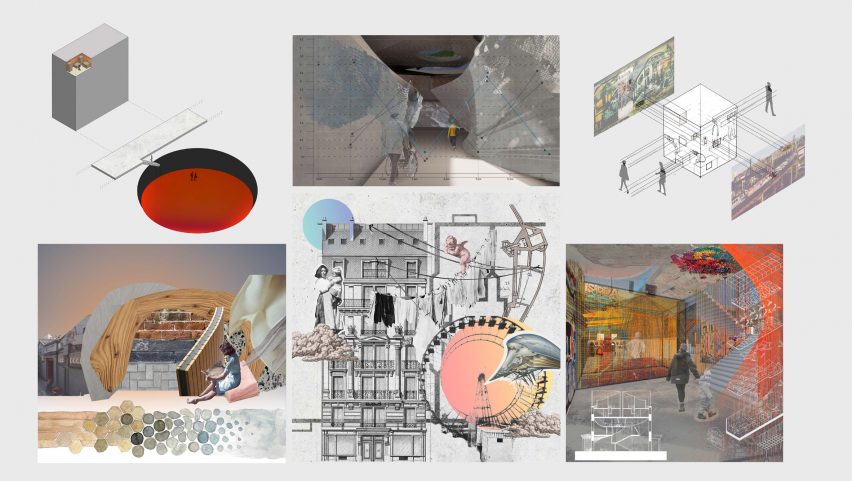
Various projects
Clockwise from top left:
Pools Under Pavement by Michael Antonio Warren (MFA Interior Design)
A Void: Rising Sea Level by Seung Heon Lee (BFA Interior Design)
Implicit Bias by Xinxiao Hui (BFA Interior Design)
Weaving Connectivity by Xiaoke Li (MFA Interior Design)
Breathing Rules by Yang Pei (MFA Interior Design)
Haptic Therapy Centre by Honghao Chen (BFA Interior Design)
The portfolio and thesis presentations of the Pratt School of Design MFA and BFA Interior Design Class of 2021 can be found on Pratt Institute’s website.
Partnership content
This school show is a partnership between Dezeen and The Pratt Institute. Find out more about Dezeen partnership content here.

